High-performing engineering teams and the Holy Grail
A presentation at DevNexus 2023 in in Atlanta, GA, USA by Jeremy Meiss

High-performing engineering teams and the Holy Grail


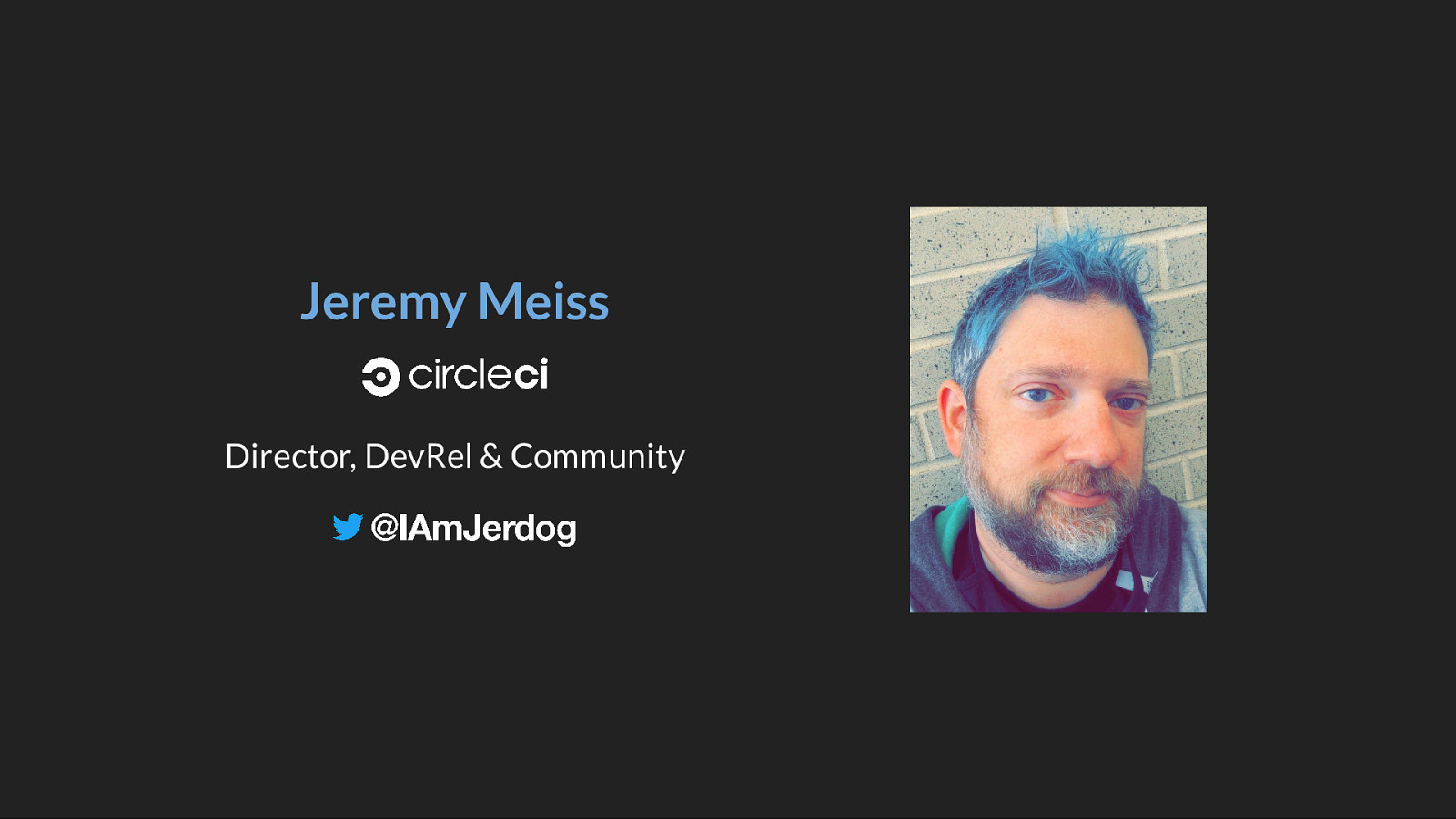
Jeremy Meiss Director, DevRel & Community

So back to the tech industry….

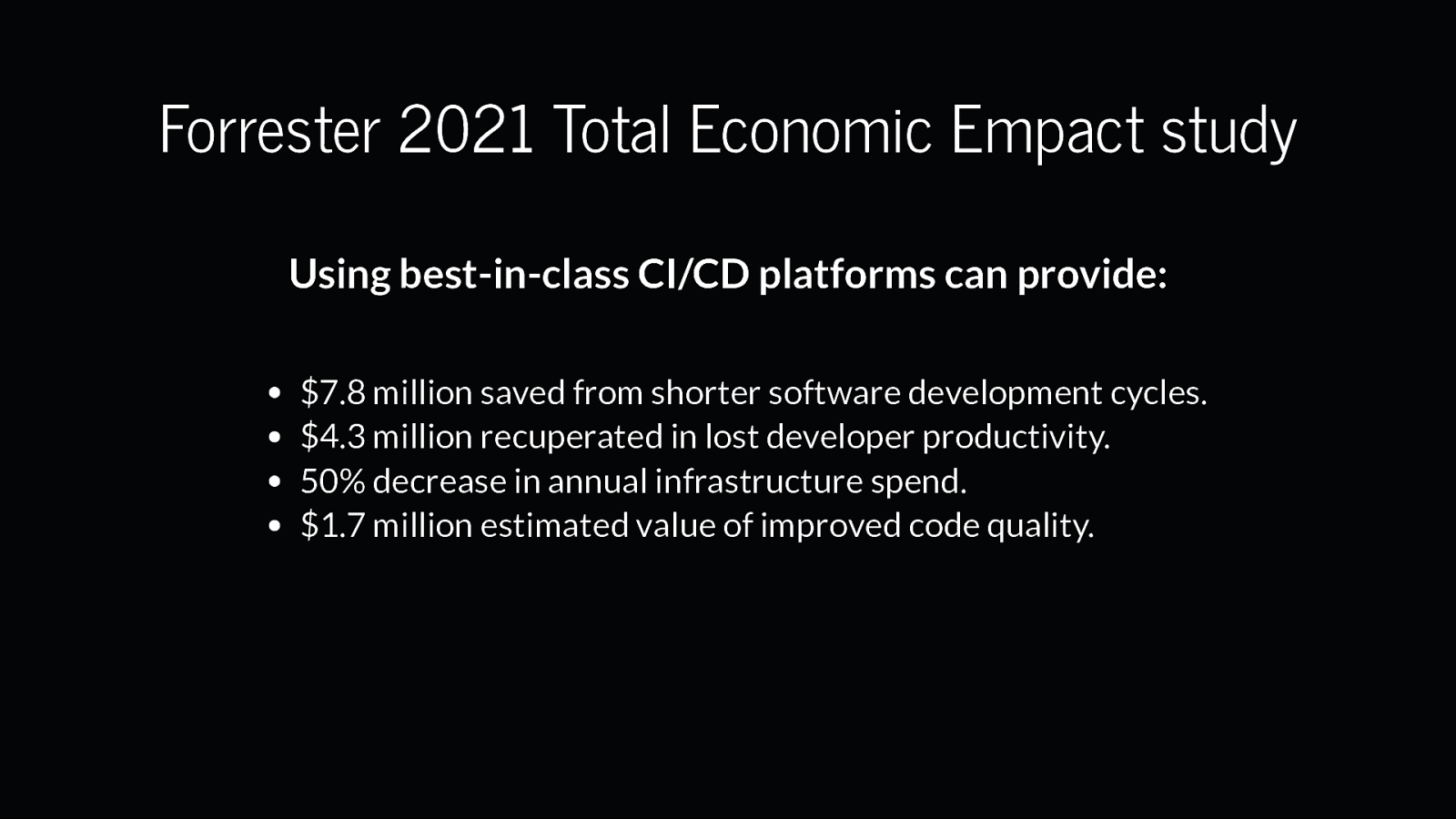
Forrester 2021 Total Economic Empact study Using best-in-class CI/CD platforms can provide: $7.8 million saved from shorter software development cycles. $4.3 million recuperated in lost developer productivity. 50% decrease in annual infrastructure spend. $1.7 million estimated value of improved code quality.
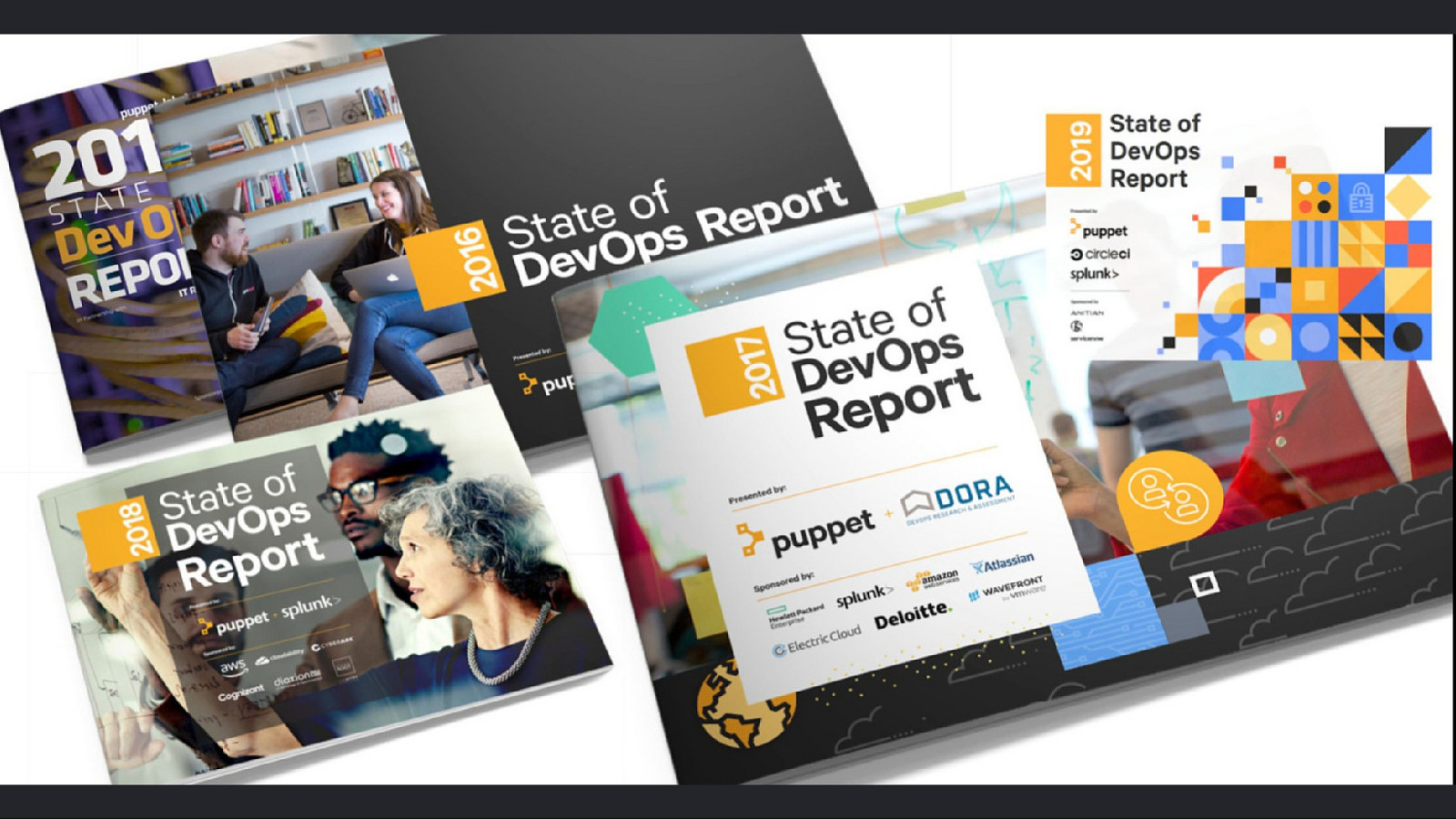


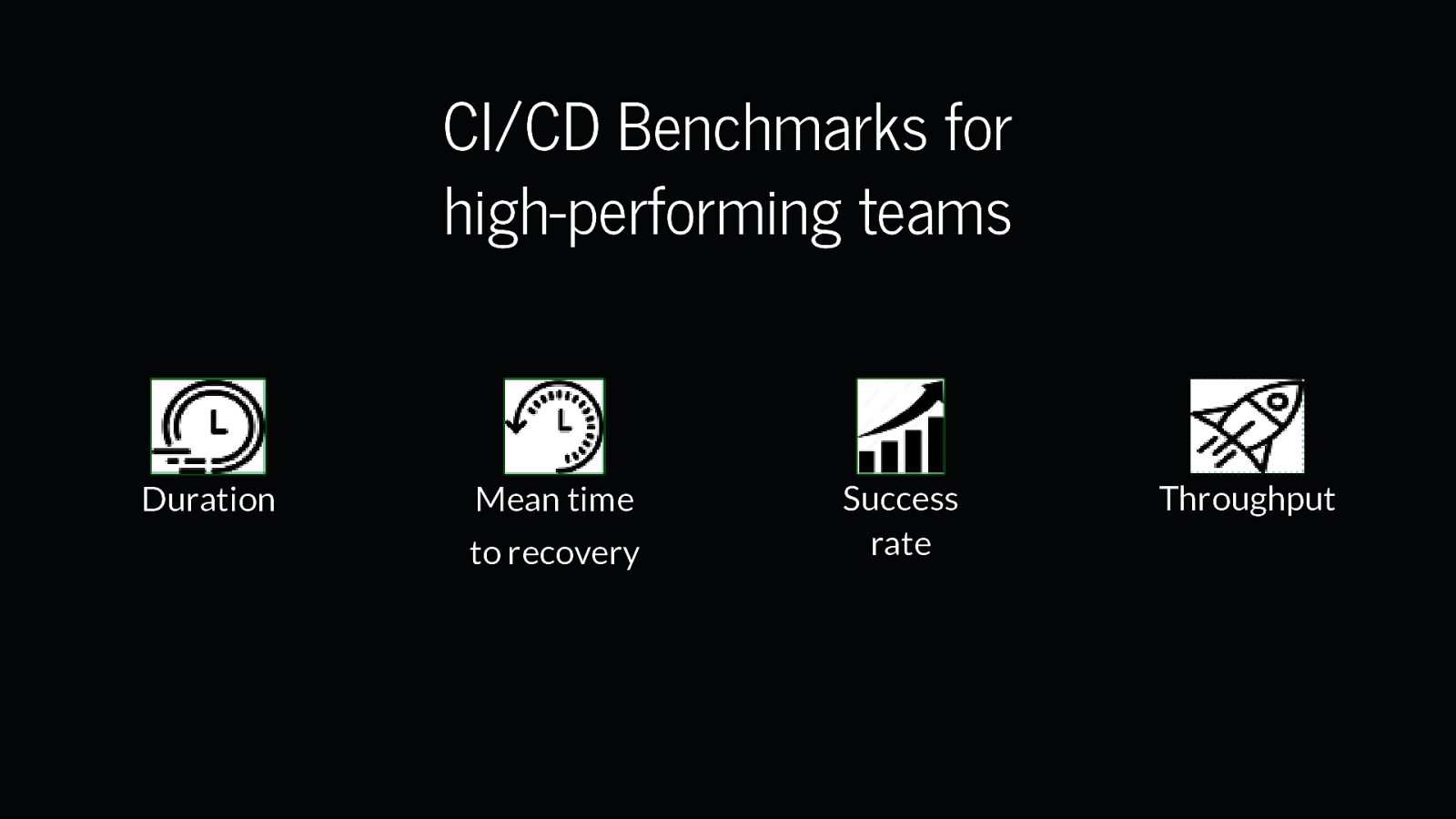
CI/CD Benchmarks for high-performing teams Duration Mean time to recovery Success rate Throughput



So what does the data say?
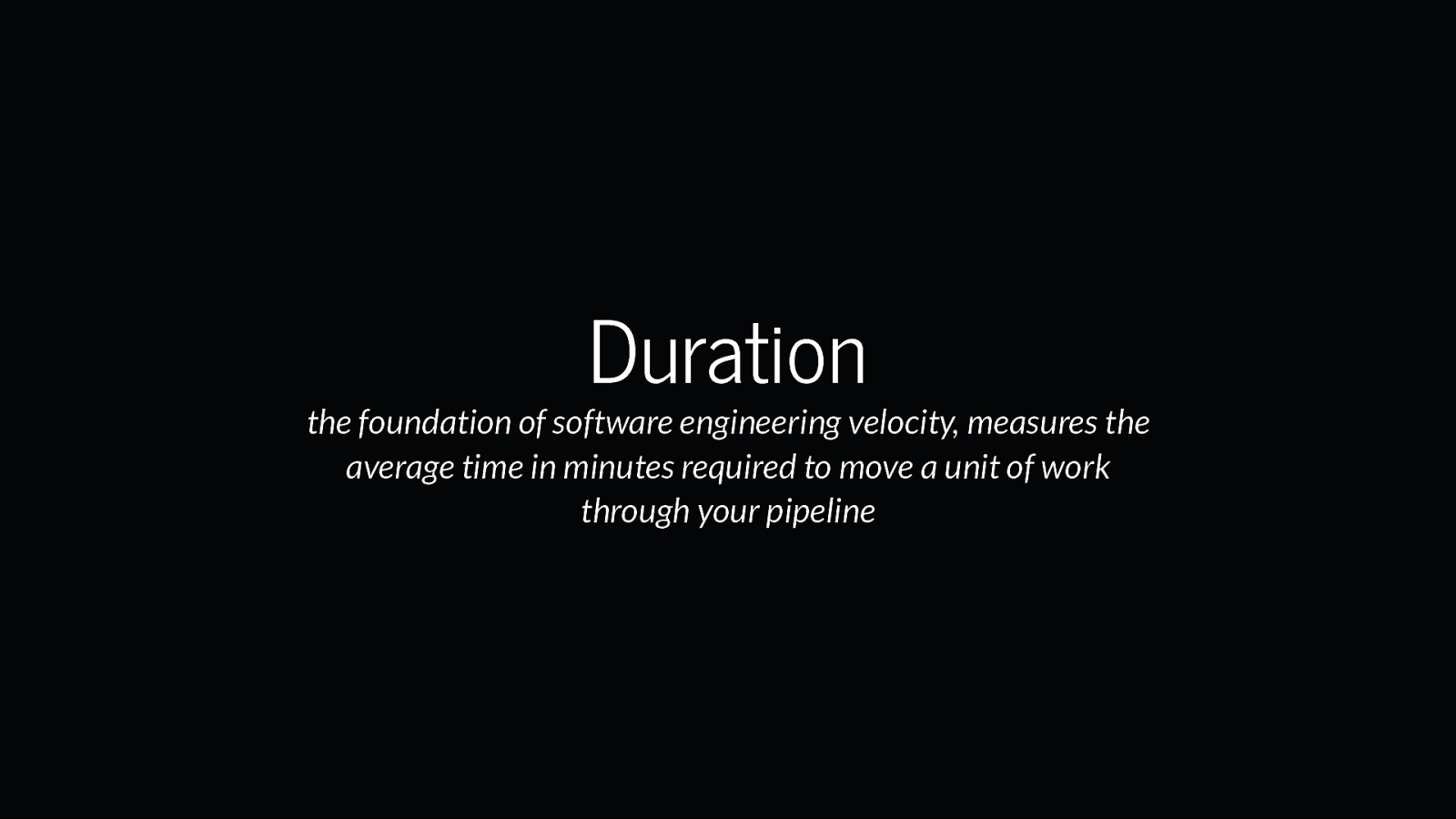
Duration the foundation of software engineering velocity, measures the average time in minutes required to move a unit of work through your pipeline



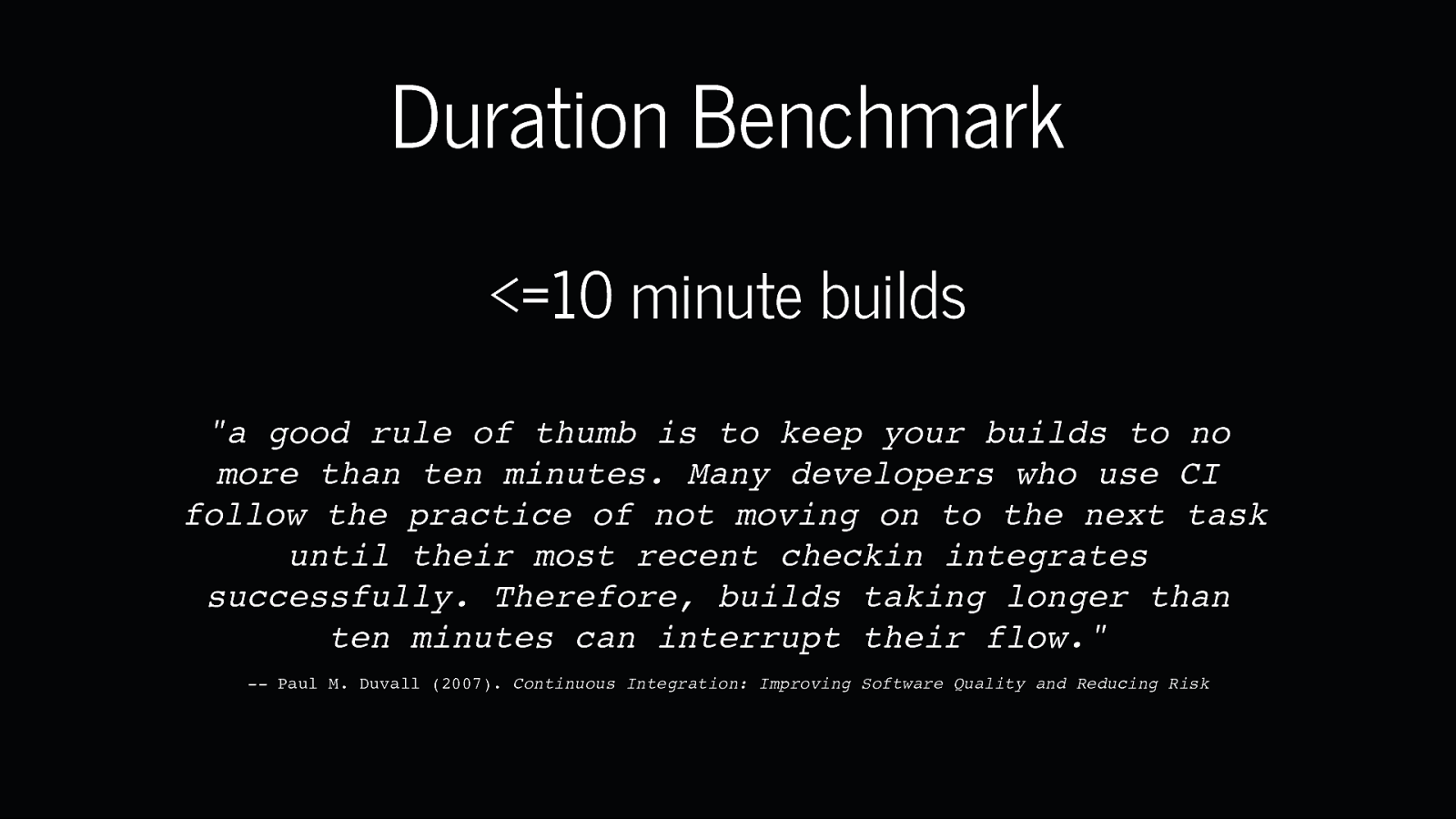
Duration Benchmark <=10 minute builds “a good rule of thumb is to keep your builds to no more than ten minutes. Many developers who use CI follow the practice of not moving on to the next task until their most recent checkin integrates successfully. Therefore, builds taking longer than ten minutes can interrupt their flow.” — Paul M. Duvall (2007). Continuous Integration: Improving Software Quality and Reducing Risk
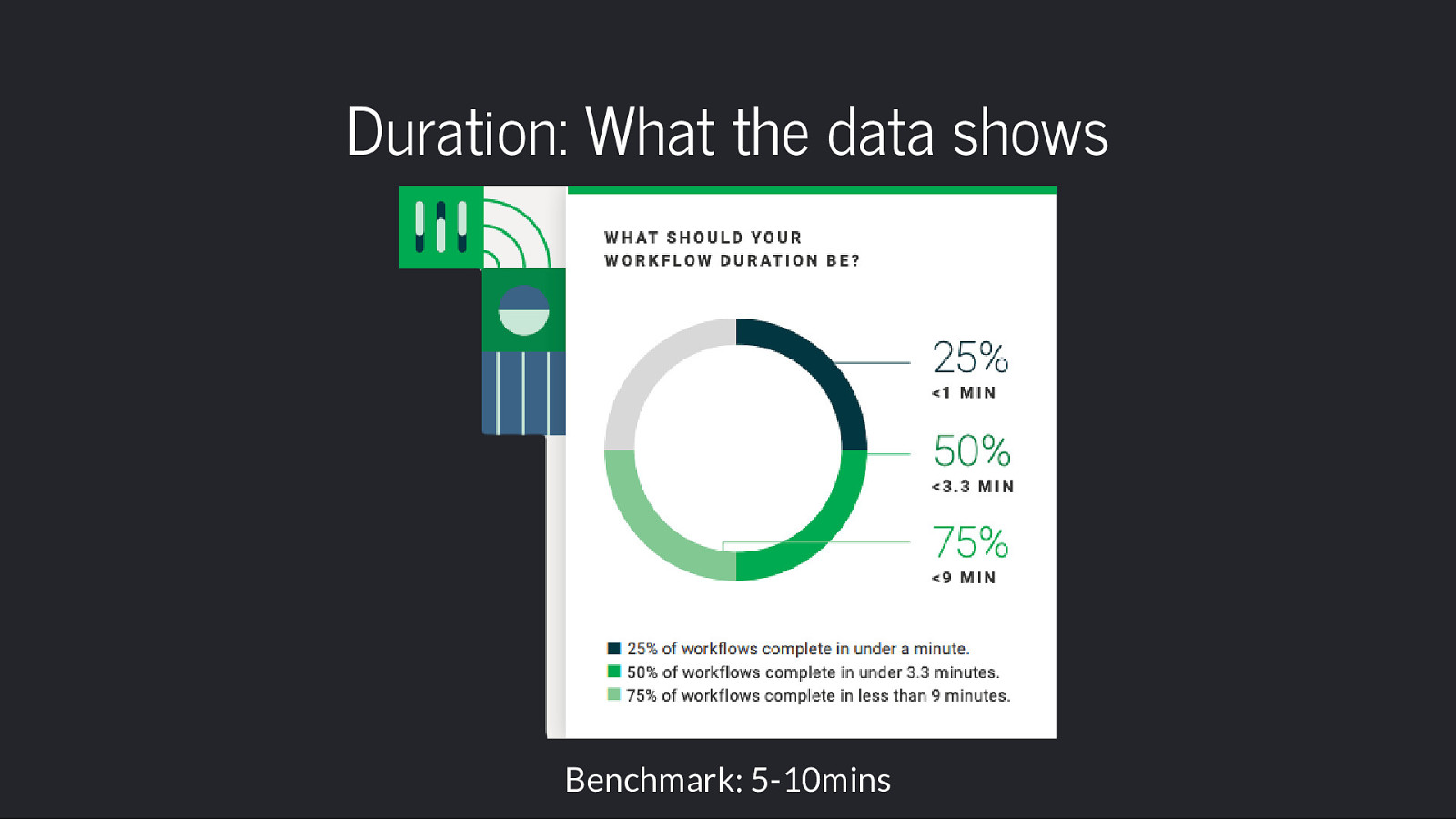
Duration: What the data shows Benchmark: 5-10mins

“Why so much lower than the Duration benchmark?”
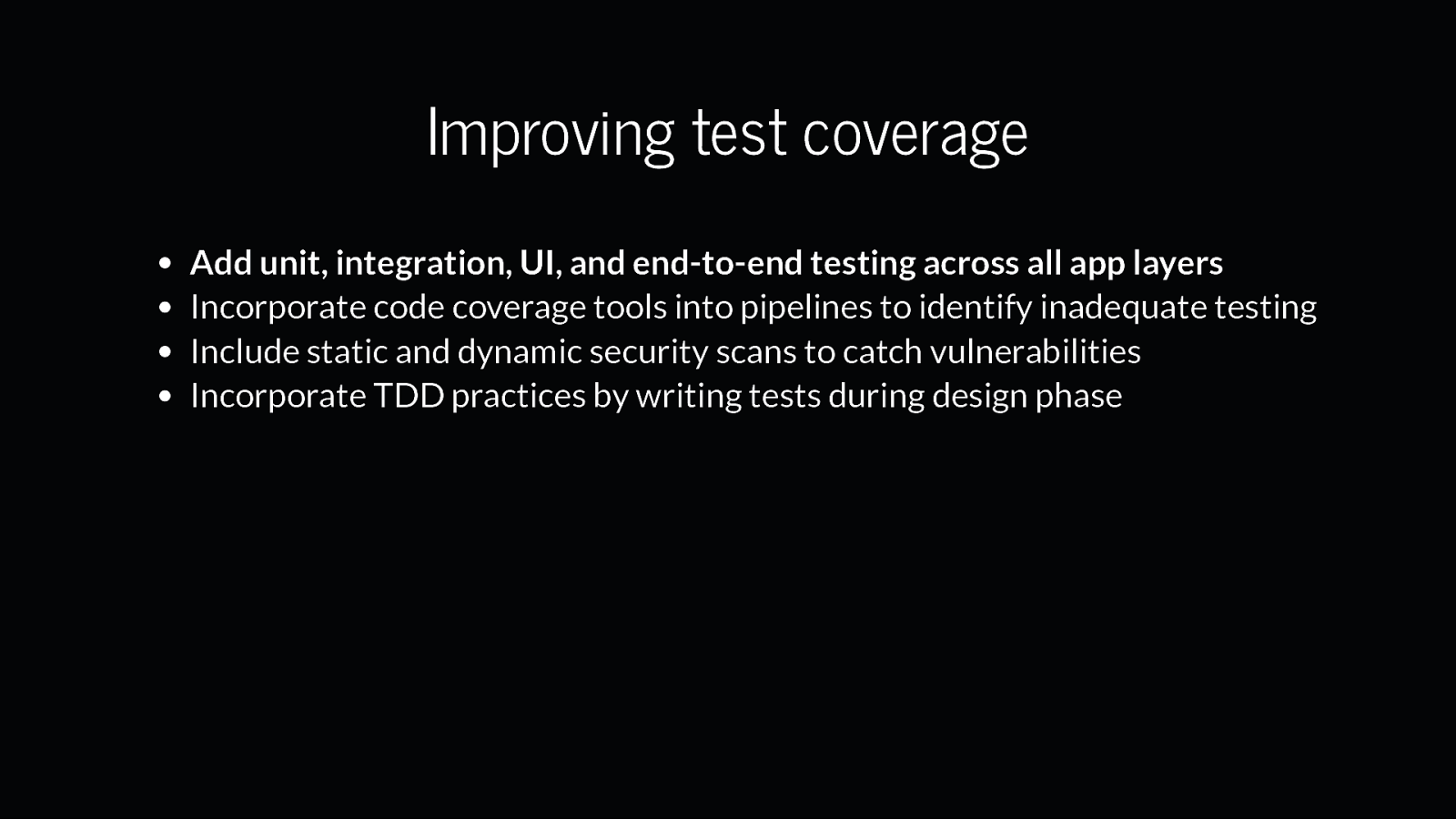
Improving test coverage Add unit, integration, UI, and end-to-end testing across all app layers Incorporate code coverage tools into pipelines to identify inadequate testing Include static and dynamic security scans to catch vulnerabilities Incorporate TDD practices by writing tests during design phase
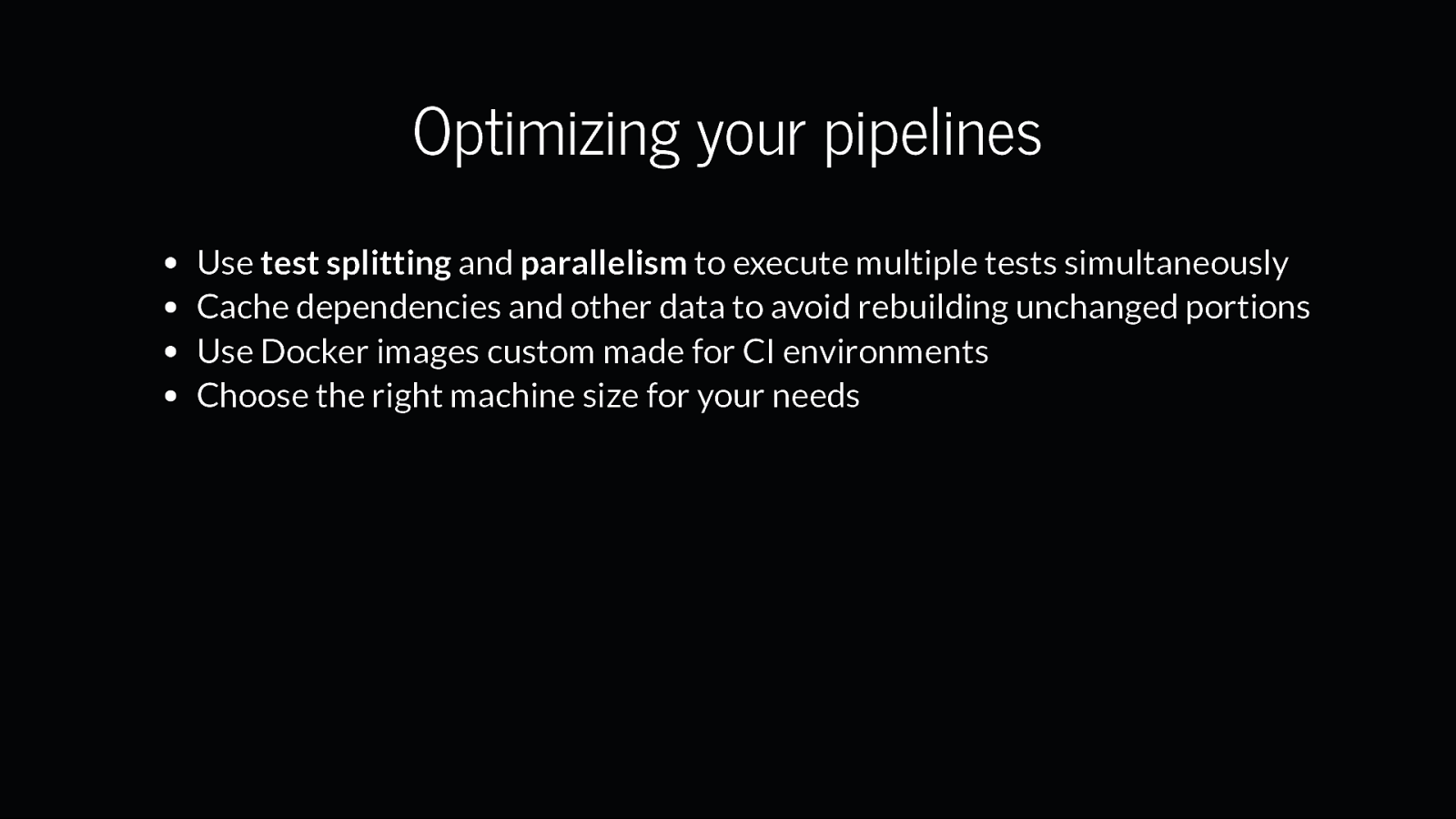
Optimizing your pipelines Use test splitting and parallelism to execute multiple tests simultaneously Cache dependencies and other data to avoid rebuilding unchanged portions Use Docker images custom made for CI environments Choose the right machine size for your needs

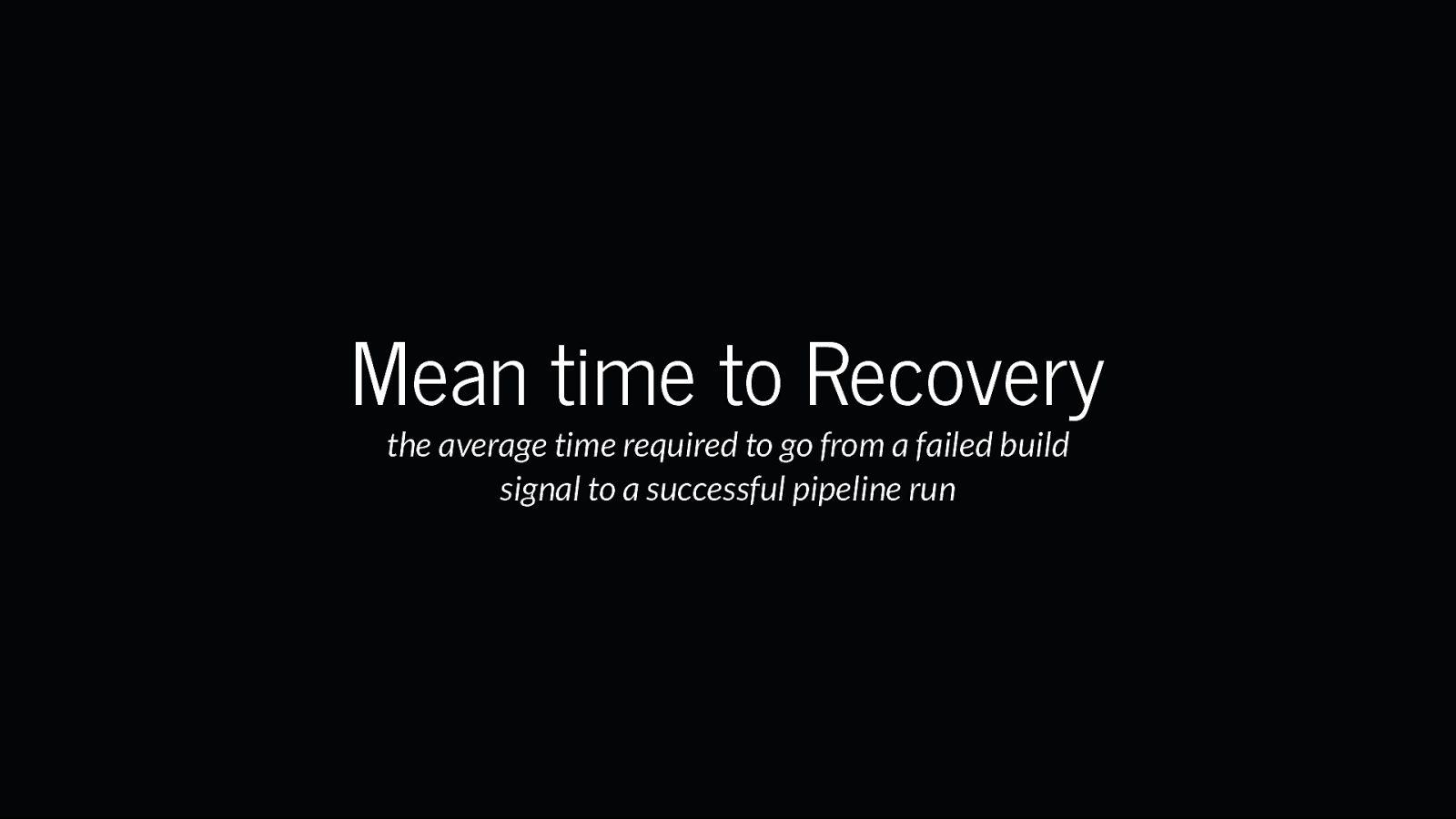
Mean time to Recovery the average time required to go from a failed build signal to a successful pipeline run
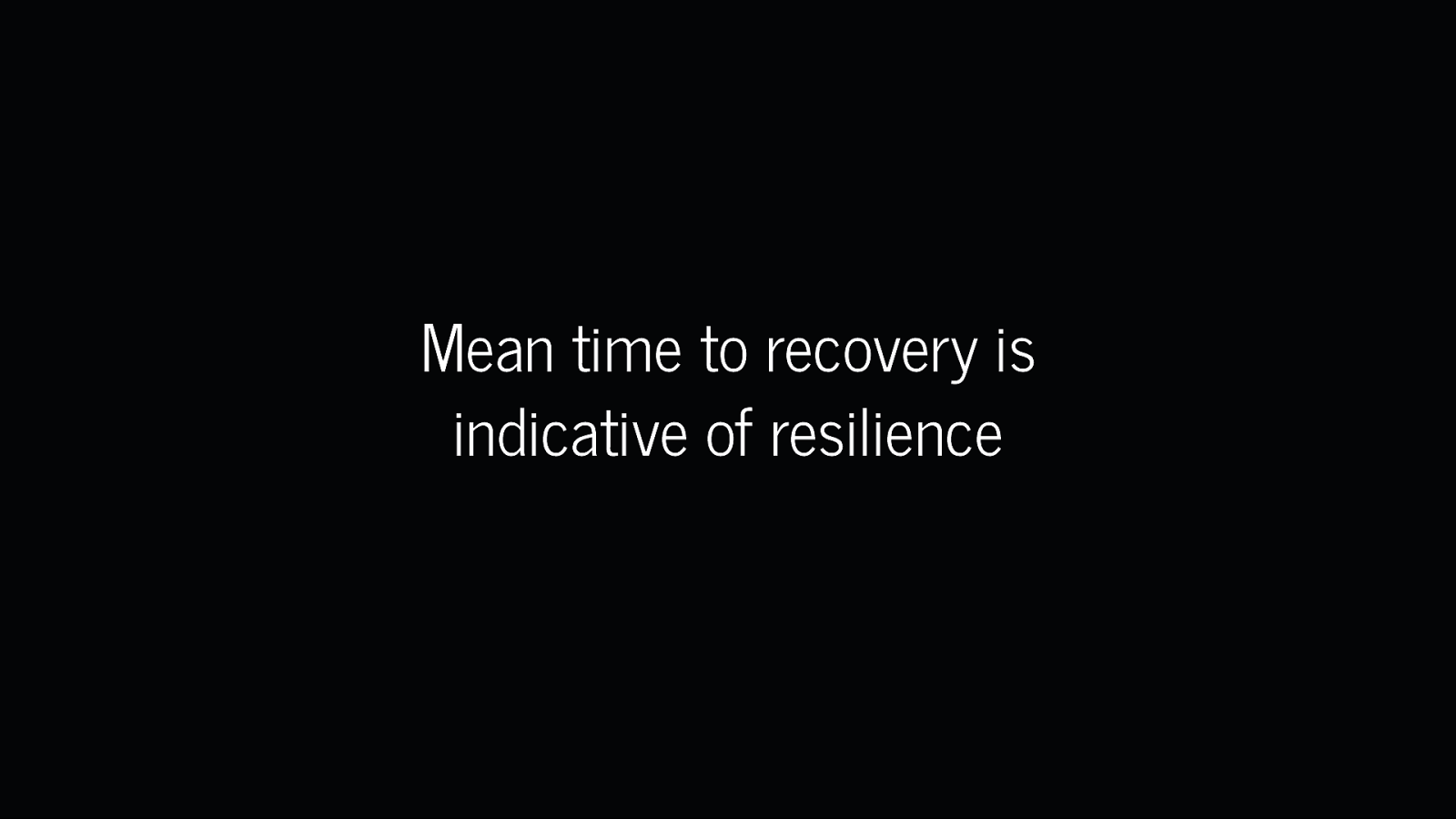
Mean time to recovery is indicative of resilience
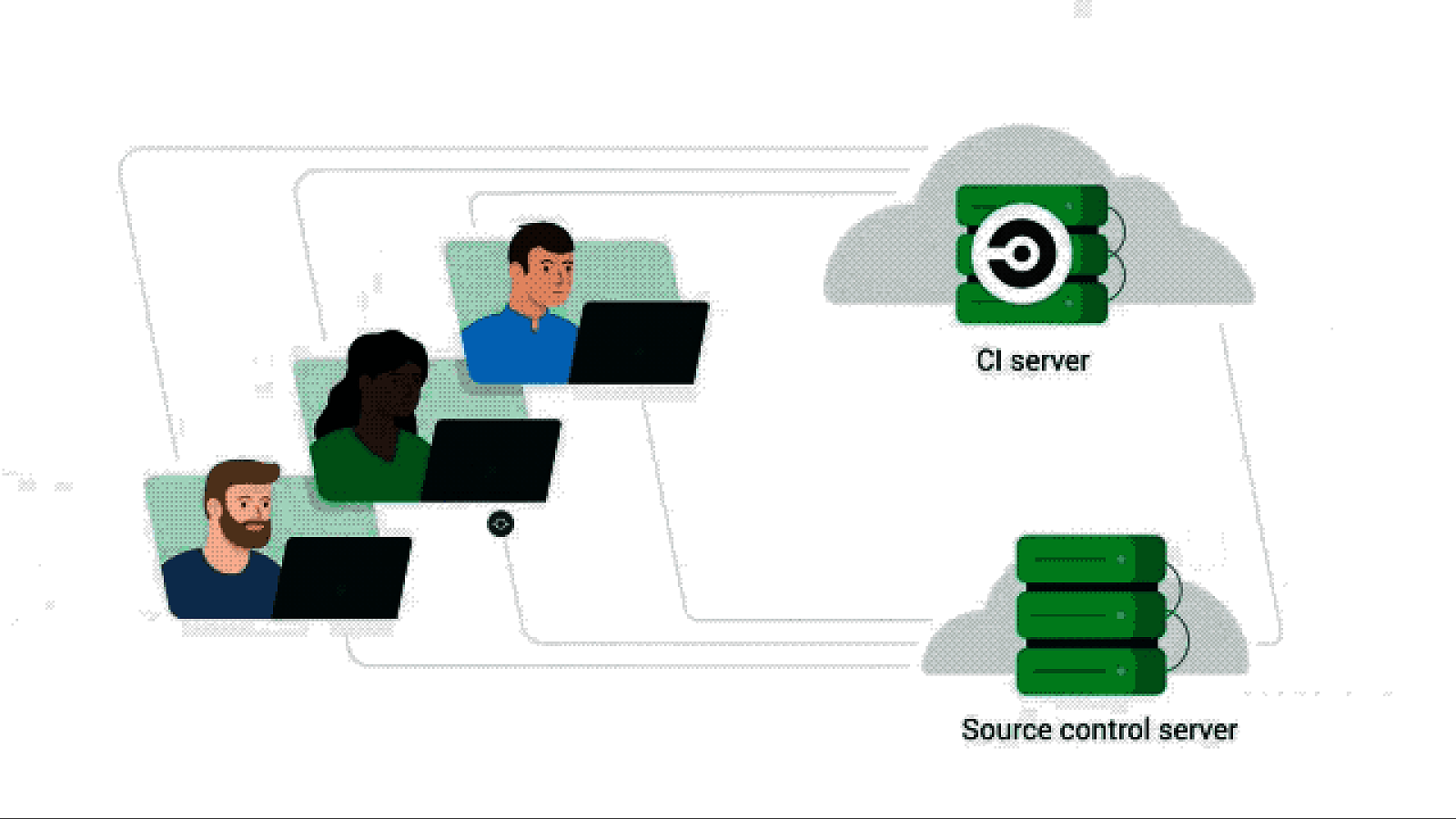
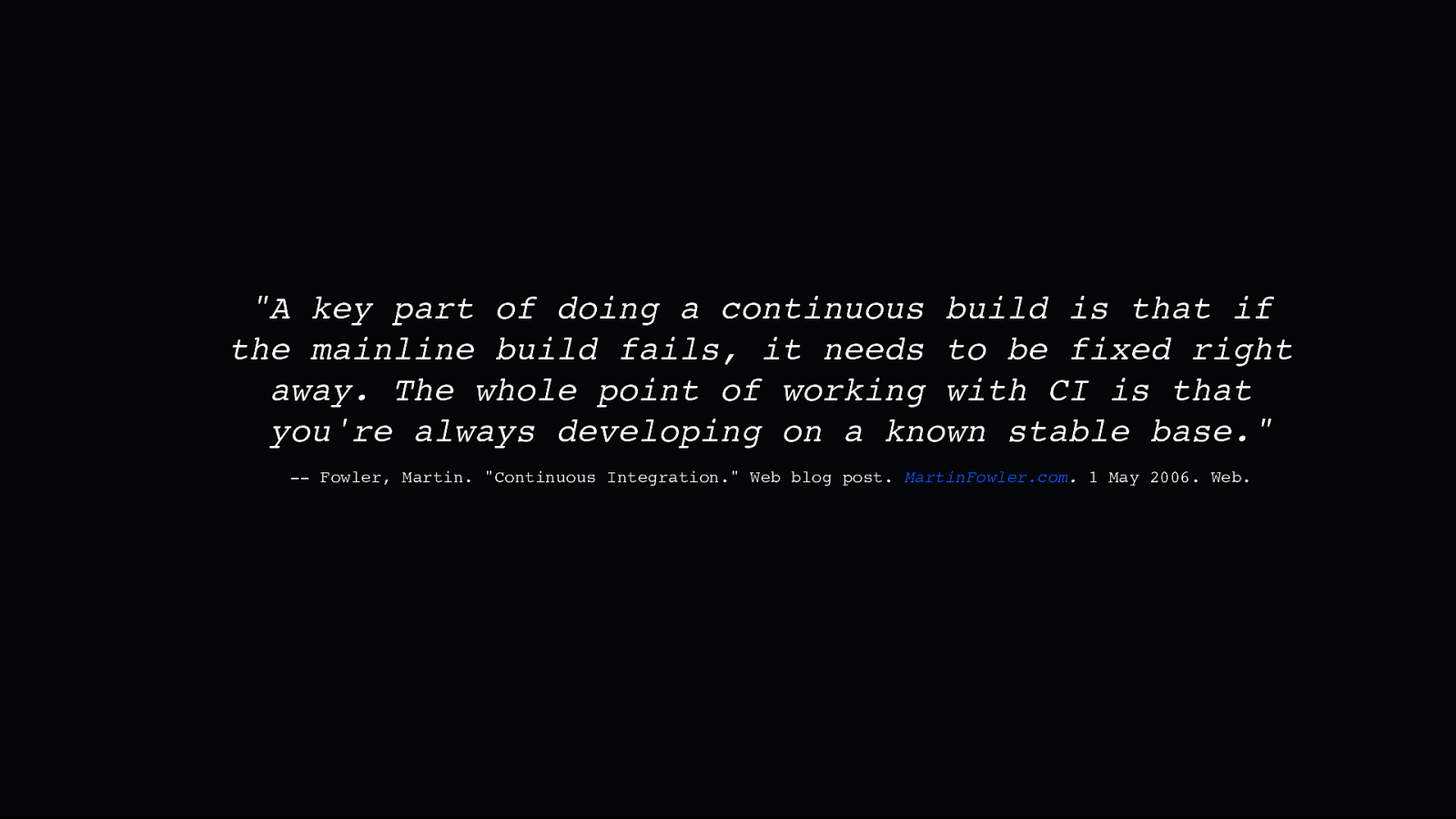
“A key part of doing a continuous build is that if the mainline build fails, it needs to be fixed right away. The whole point of working with CI is that you’re always developing on a known stable base.” — Fowler, Martin. “Continuous Integration.” Web blog post. MartinFowler.com. 1 May 2006. Web.

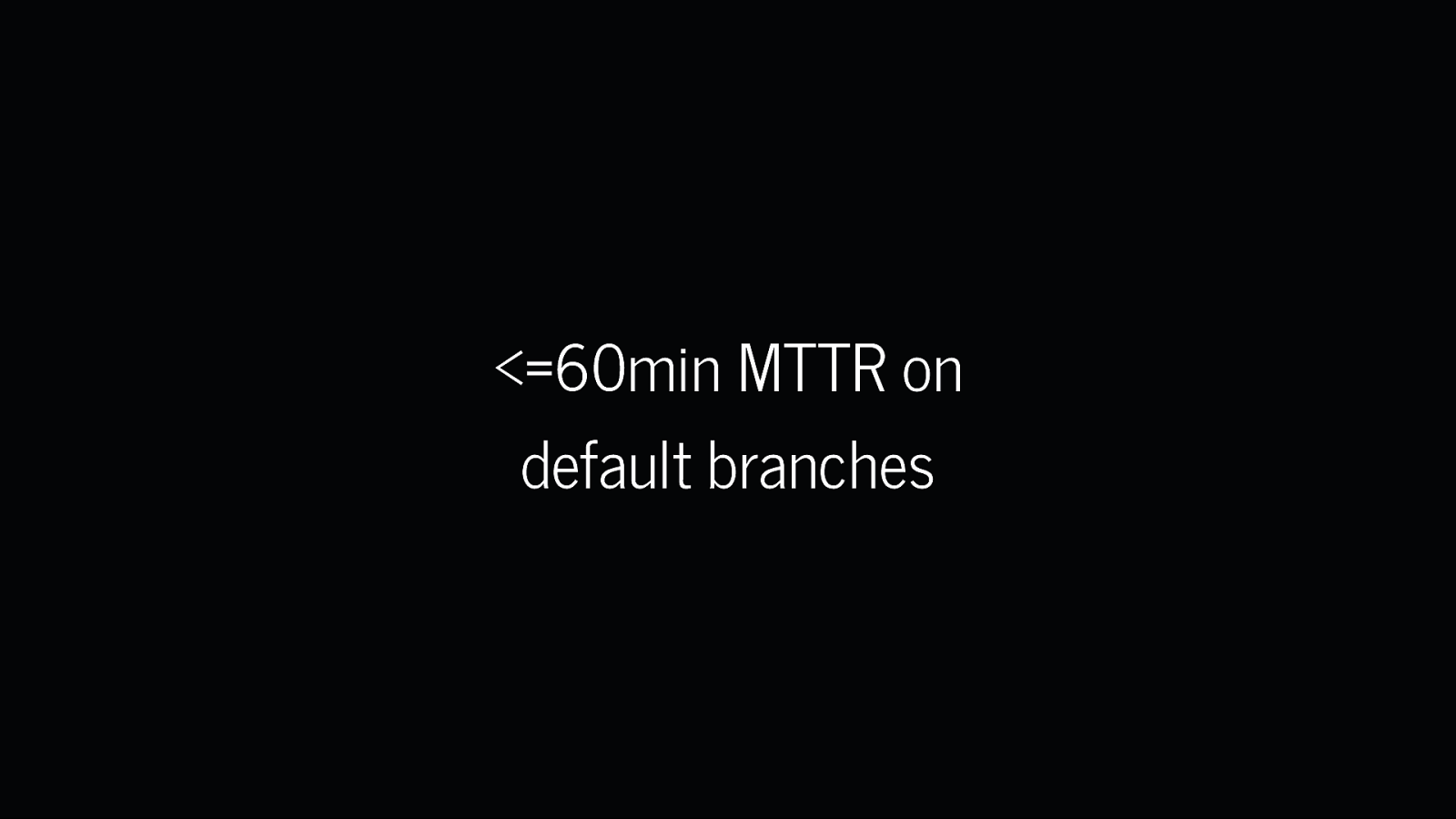
<=60min MTTR on default branches
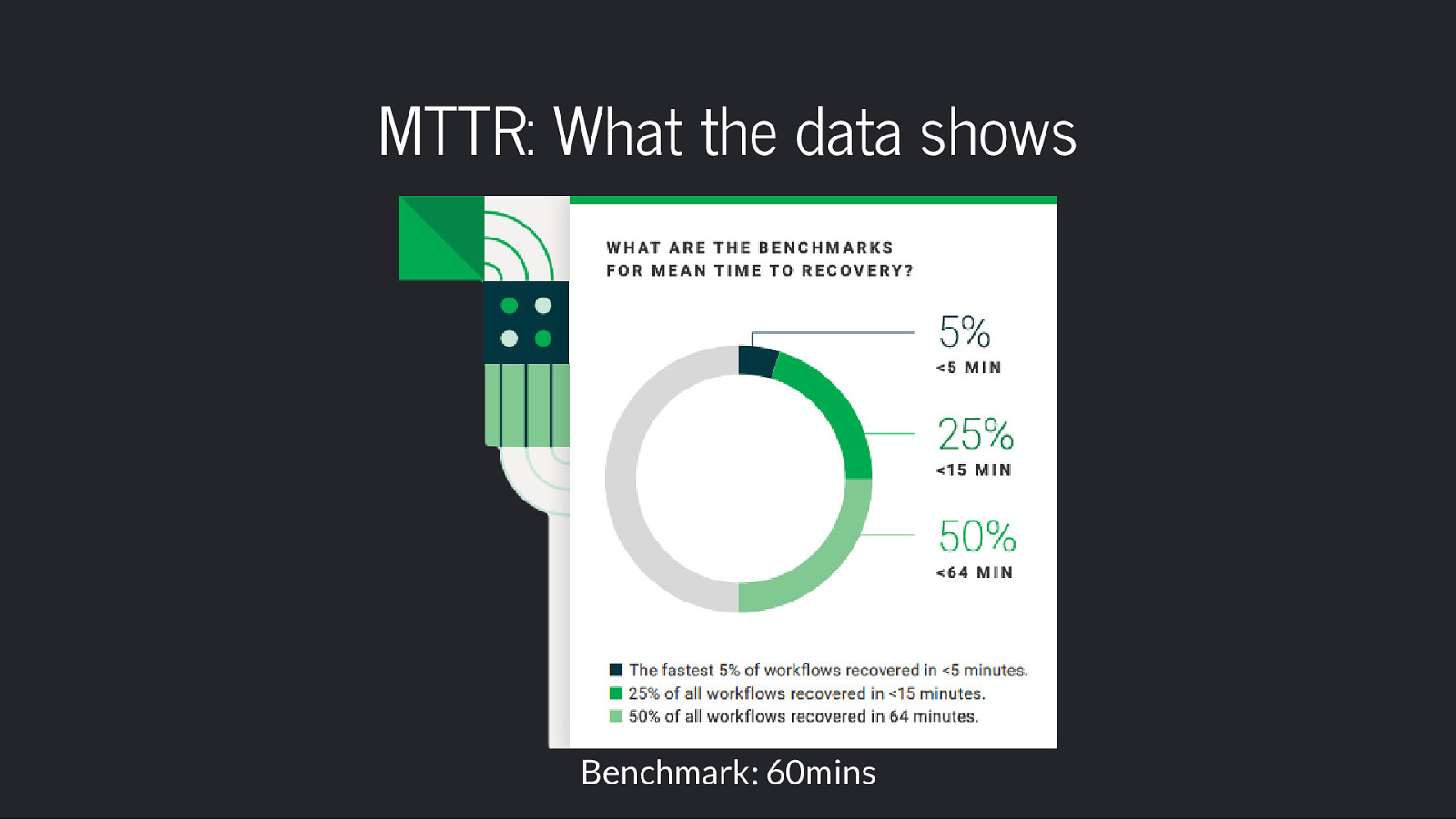
MTTR: What the data shows Benchmark: 60mins
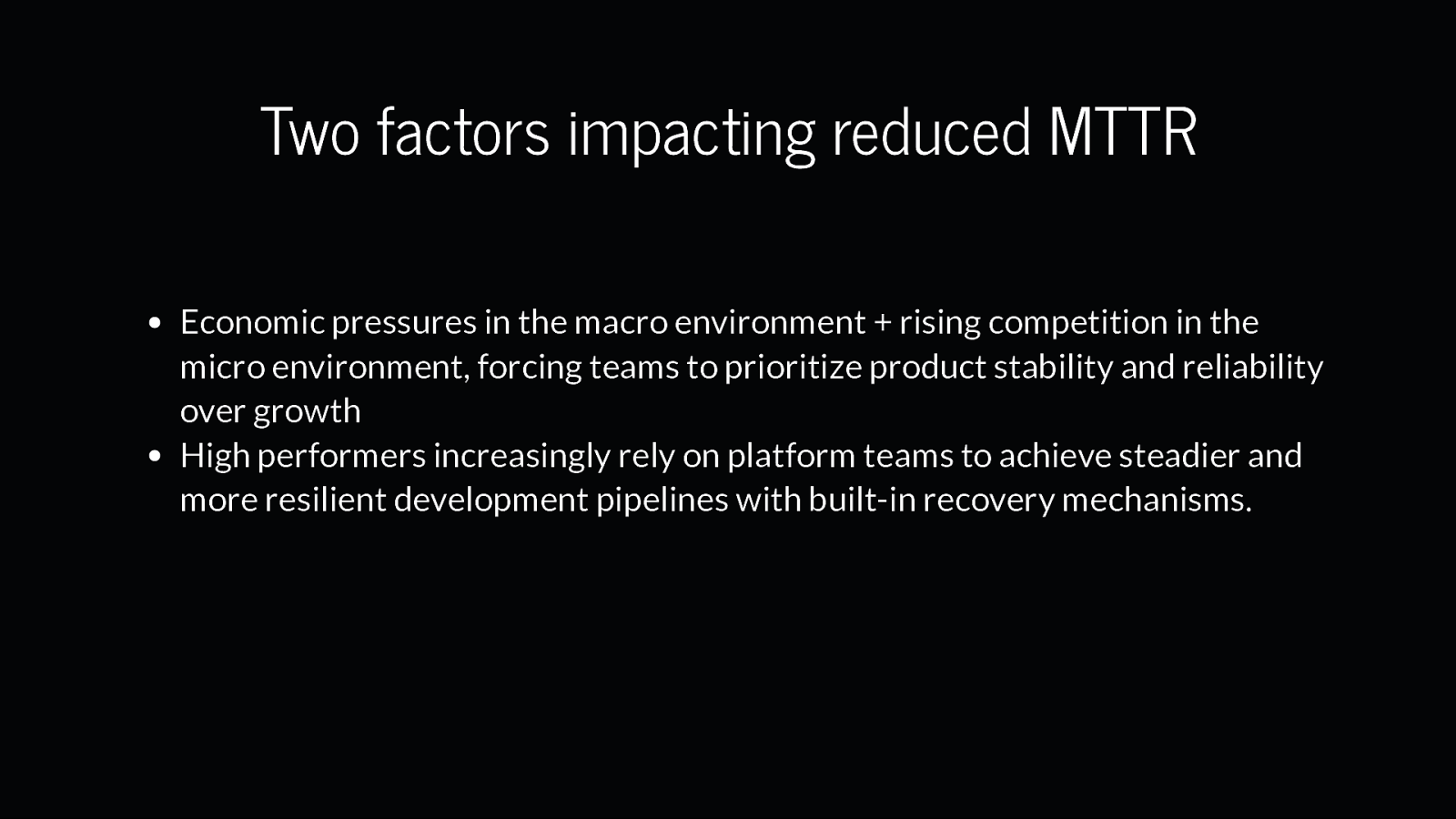
Two factors impacting reduced MTTR Economic pressures in the macro environment + rising competition in the micro environment, forcing teams to prioritize product stability and reliability over growth High performers increasingly rely on platform teams to achieve steadier and more resilient development pipelines with built-in recovery mechanisms.
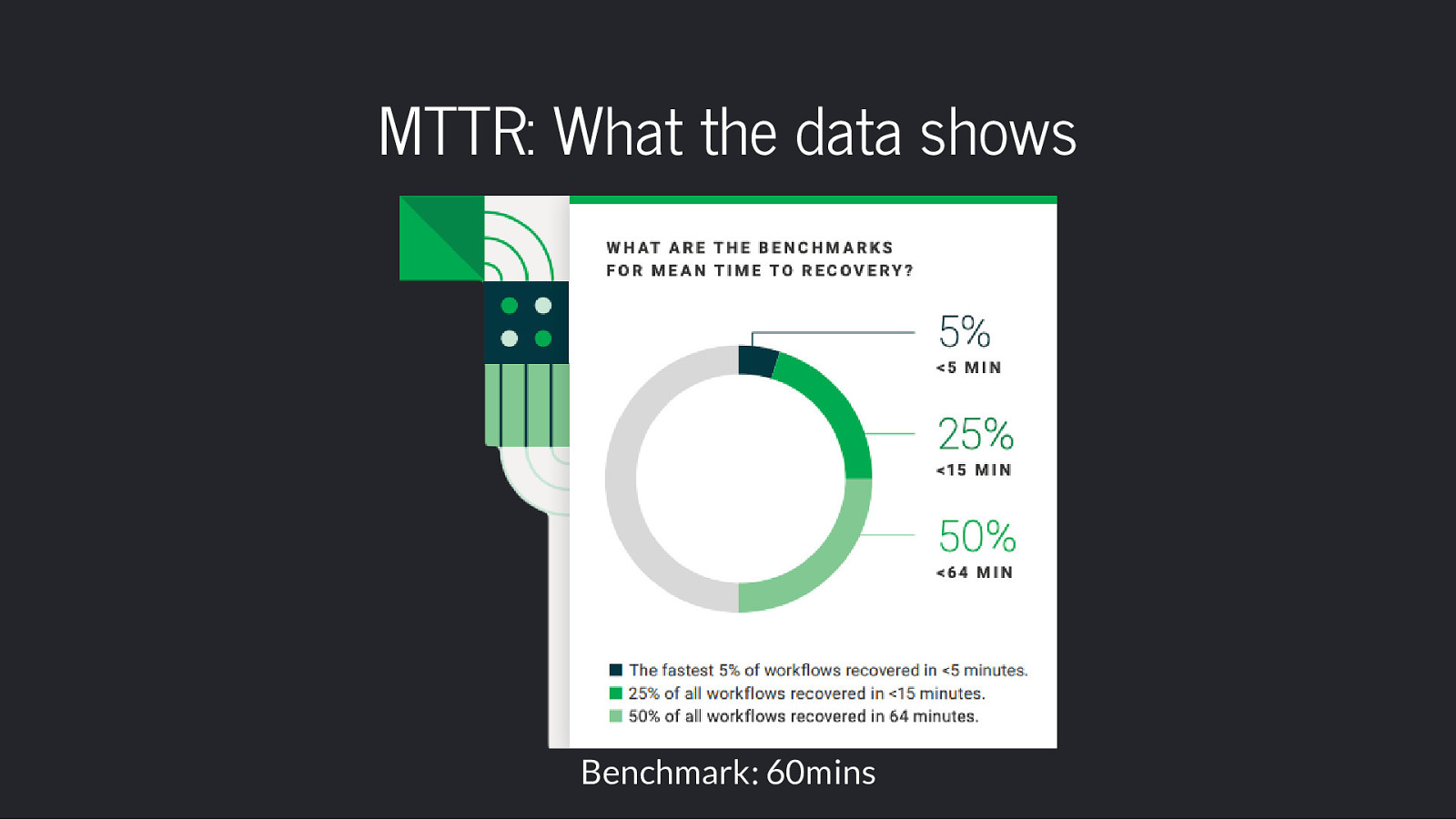
MTTR: What the data shows Benchmark: 60mins

Treat your default branch as the lifeblood of your project
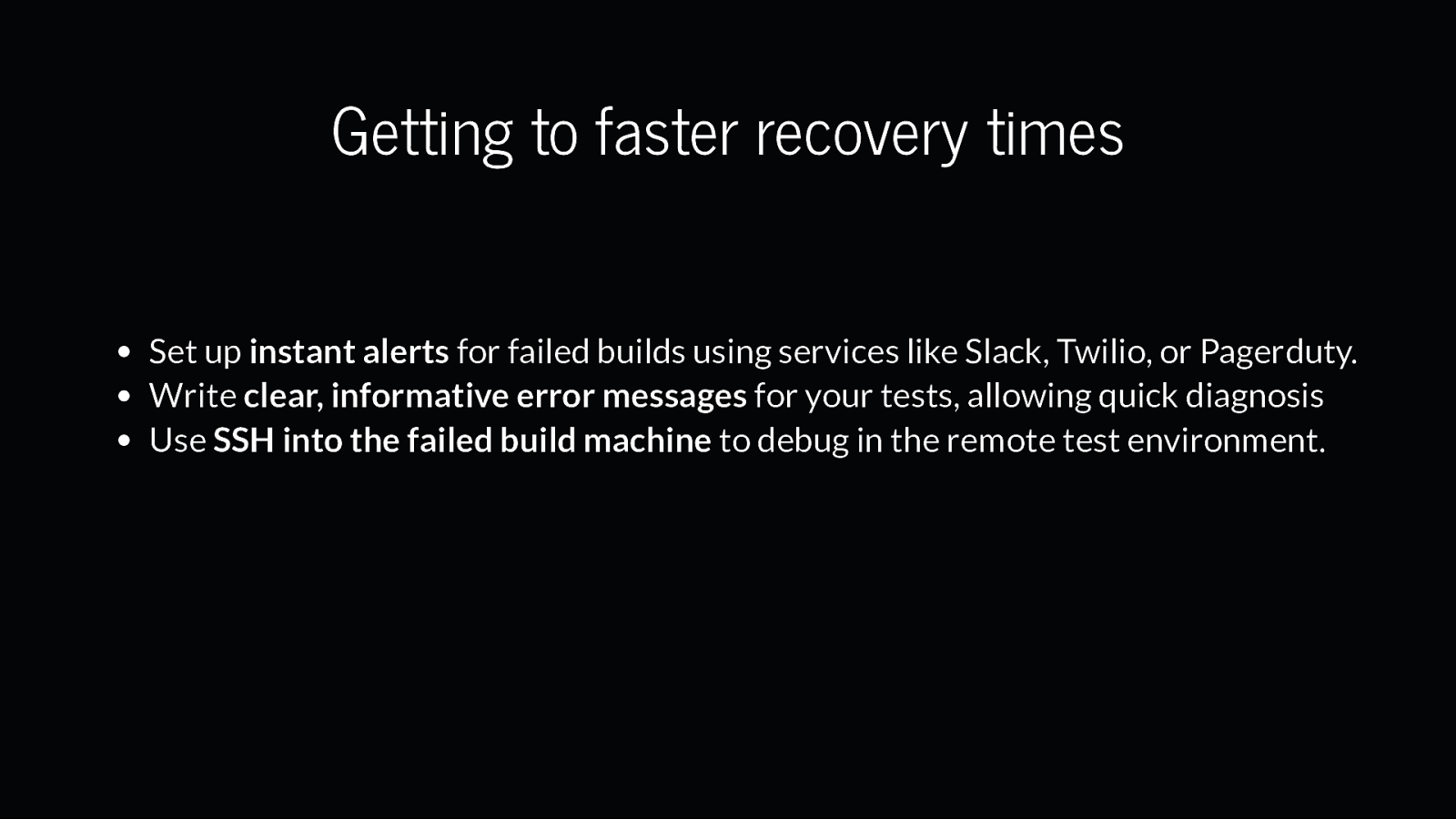
Getting to faster recovery times Set up instant alerts for failed builds using services like Slack, Twilio, or Pagerduty. Write clear, informative error messages for your tests, allowing quick diagnosis Use SSH into the failed build machine to debug in the remote test environment.
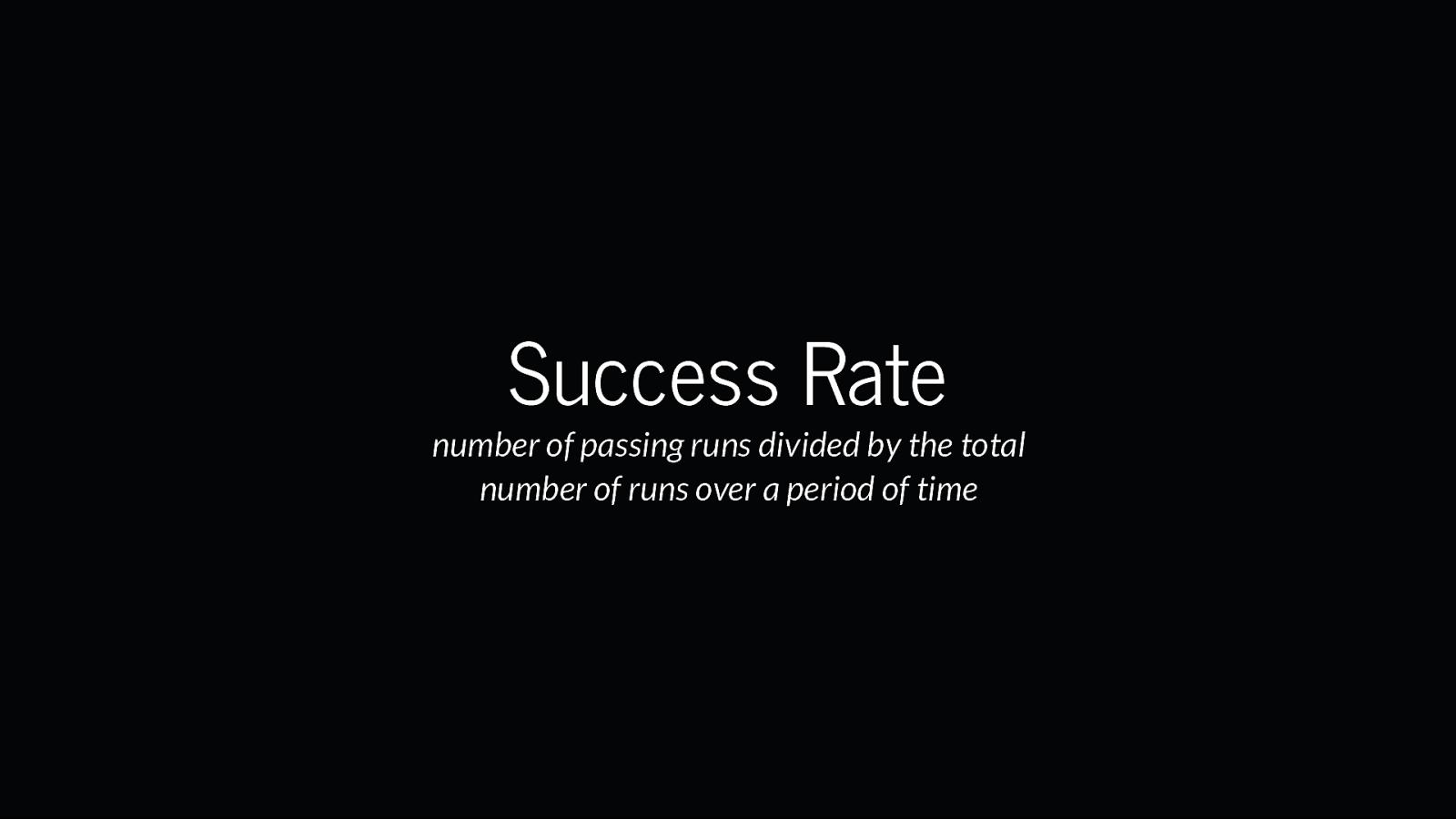
Success Rate number of passing runs divided by the total number of runs over a period of time

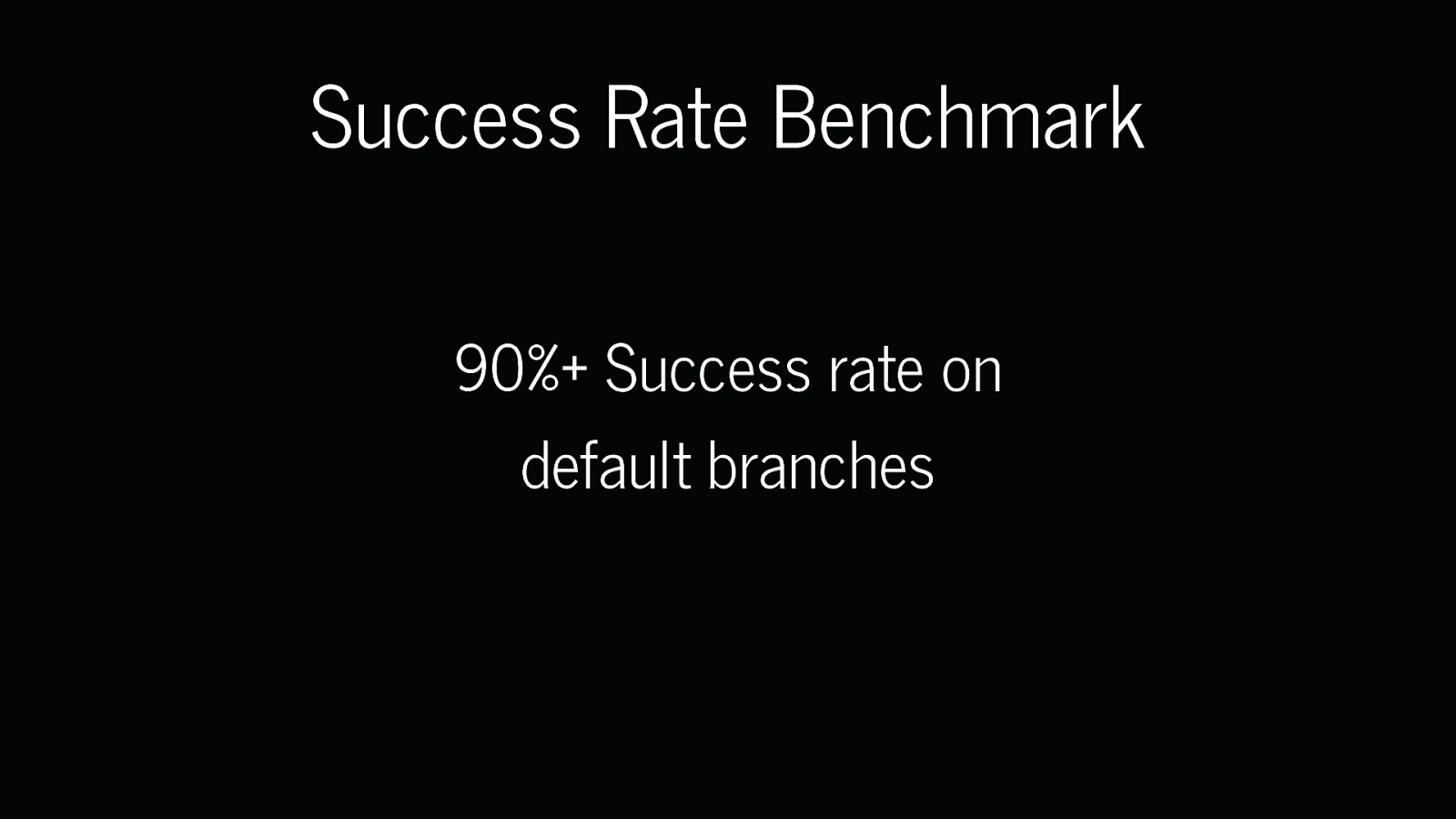
Success Rate Benchmark 90%+ Success rate on default branches
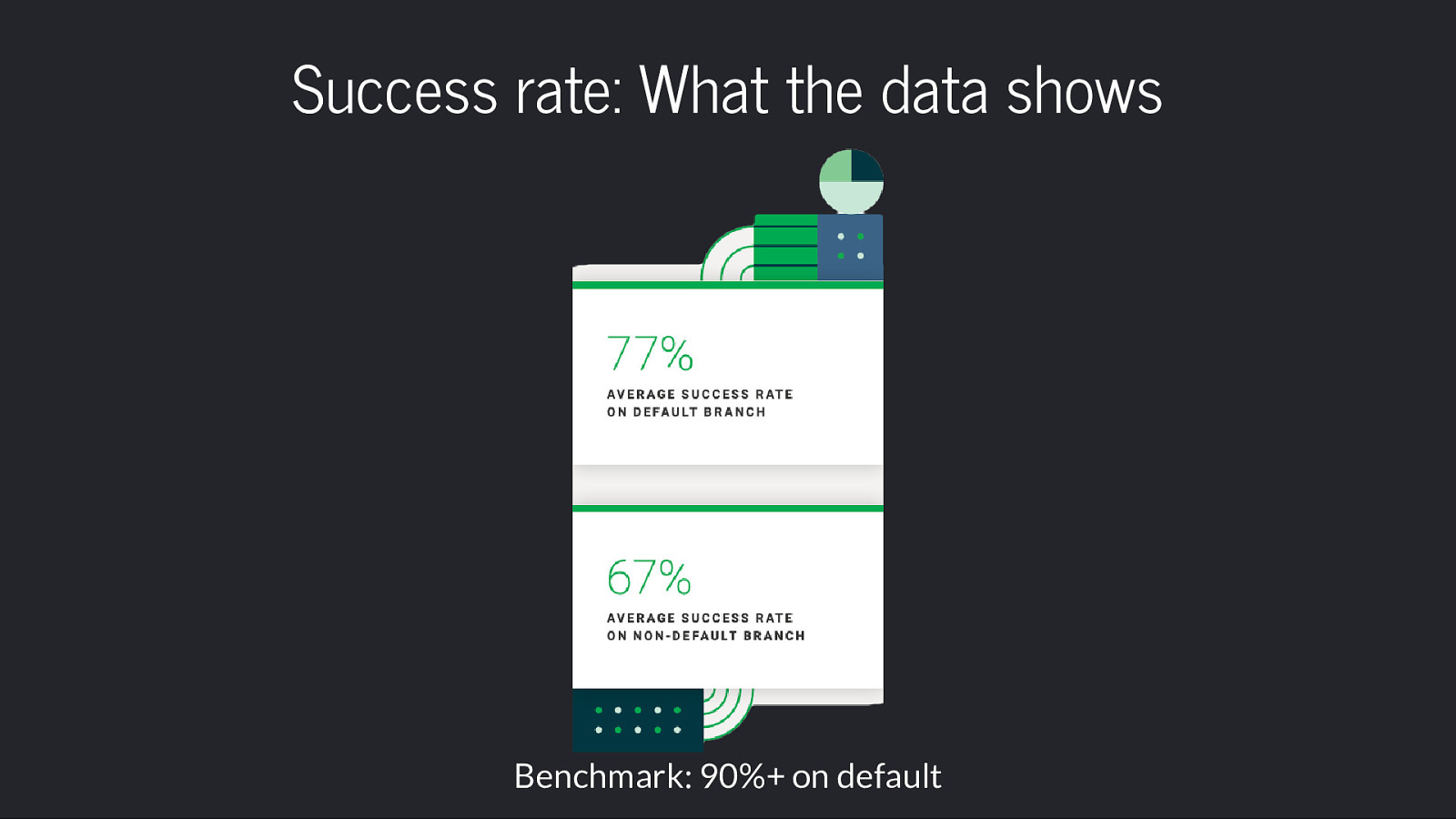
Success rate: What the data shows Benchmark: 90%+ on default

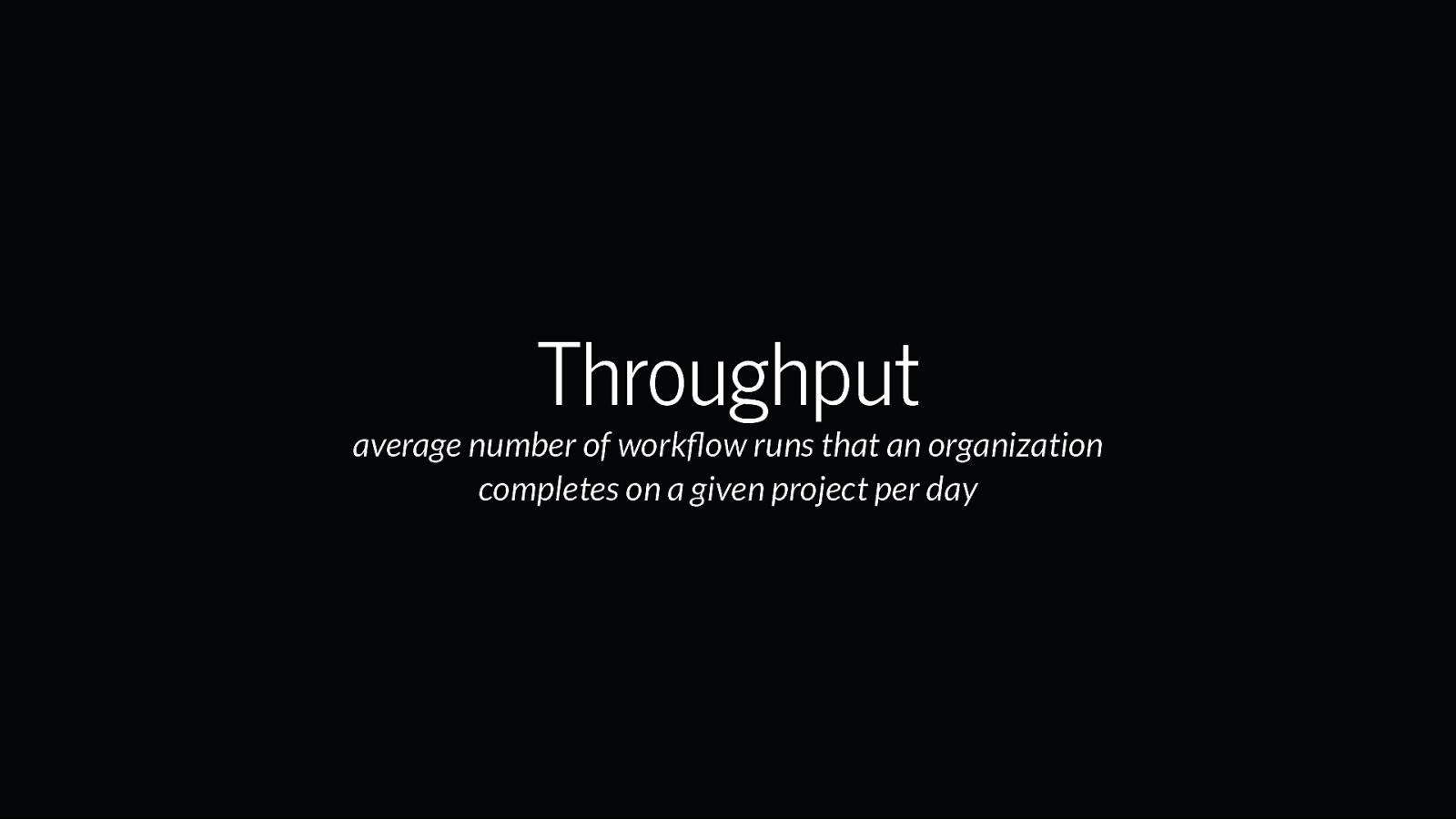
Throughput average number of workflow runs that an organization completes on a given project per day
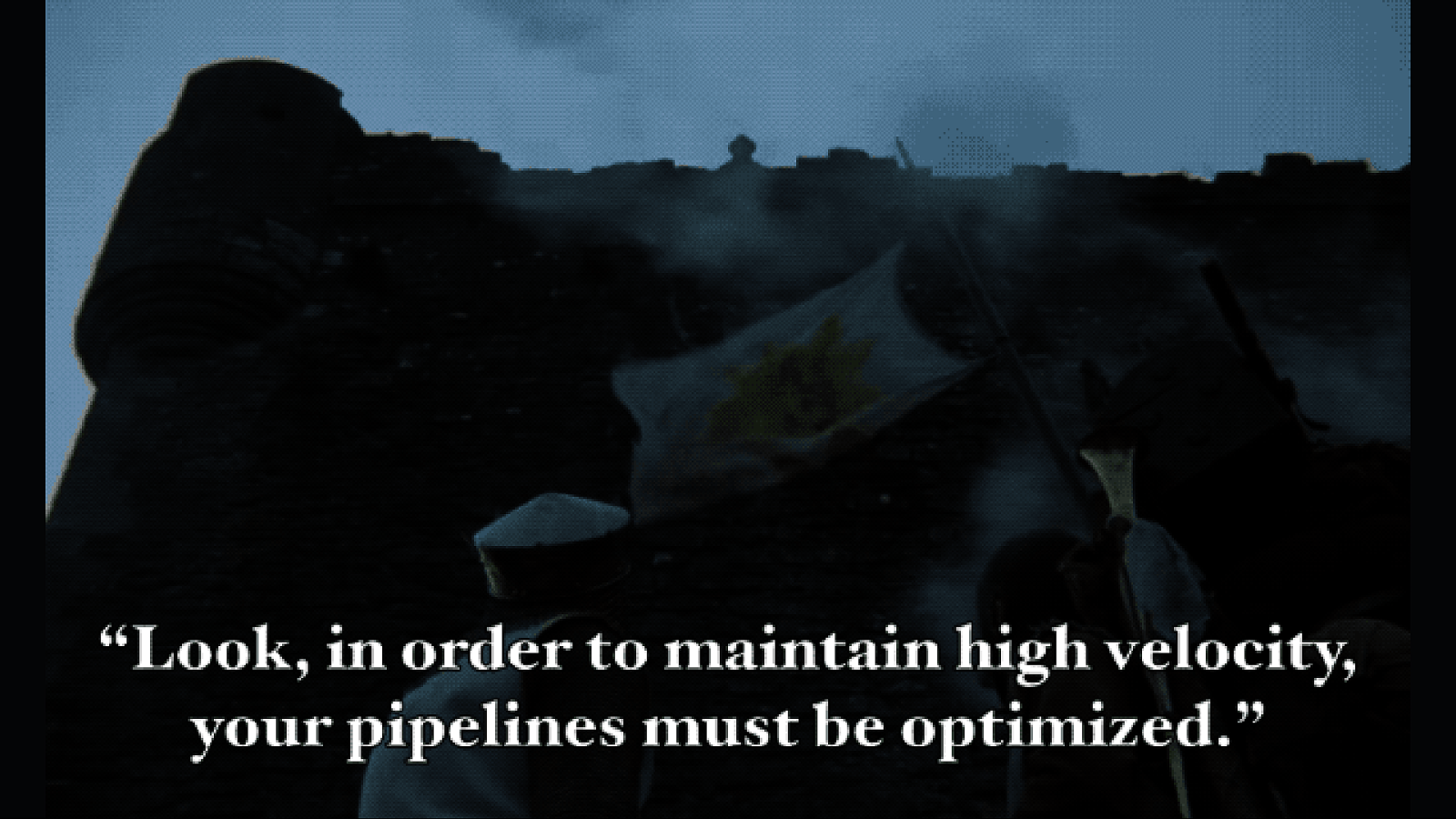


It depends.
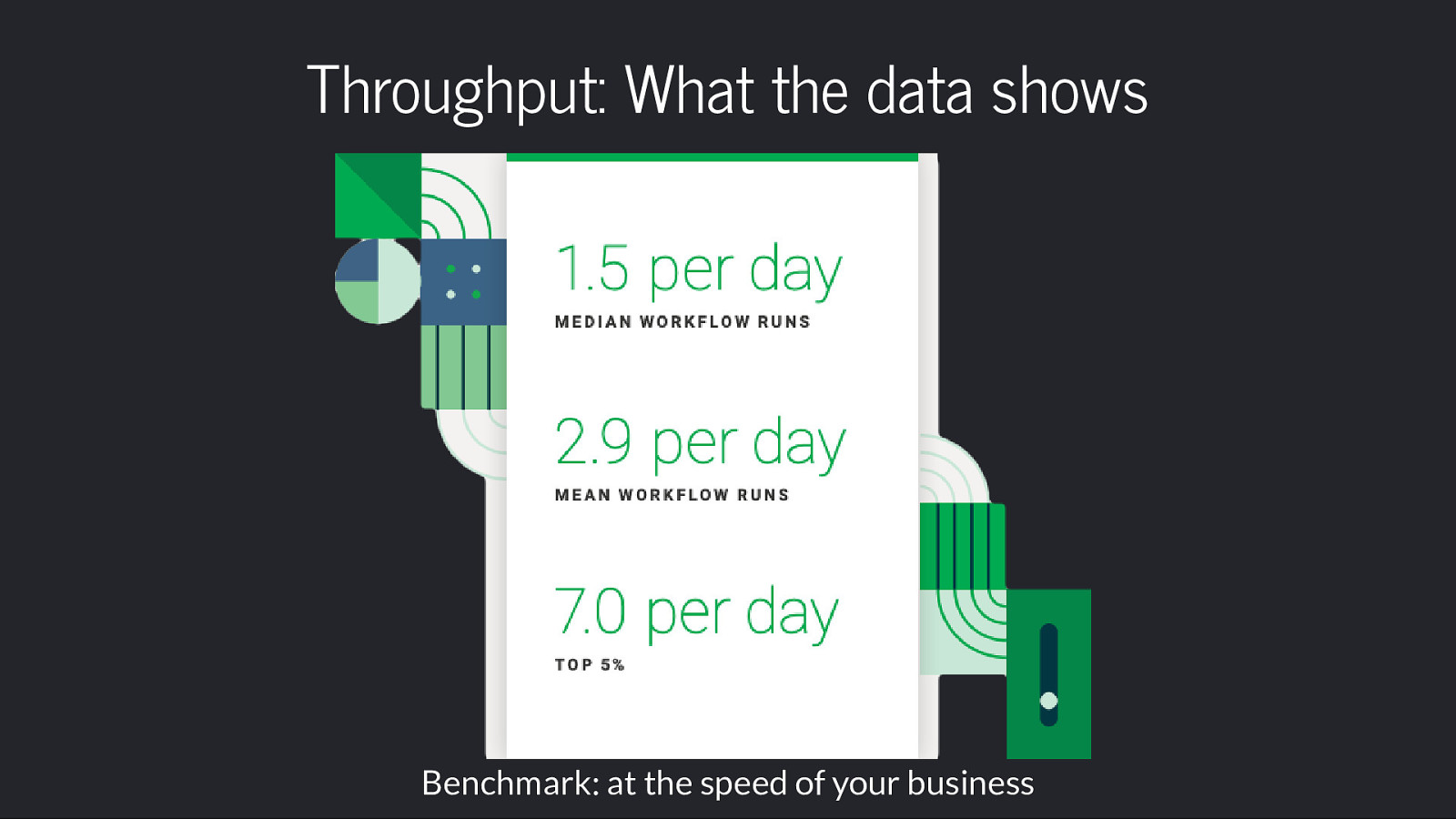
Throughput: What the data shows Benchmark: at the speed of your business


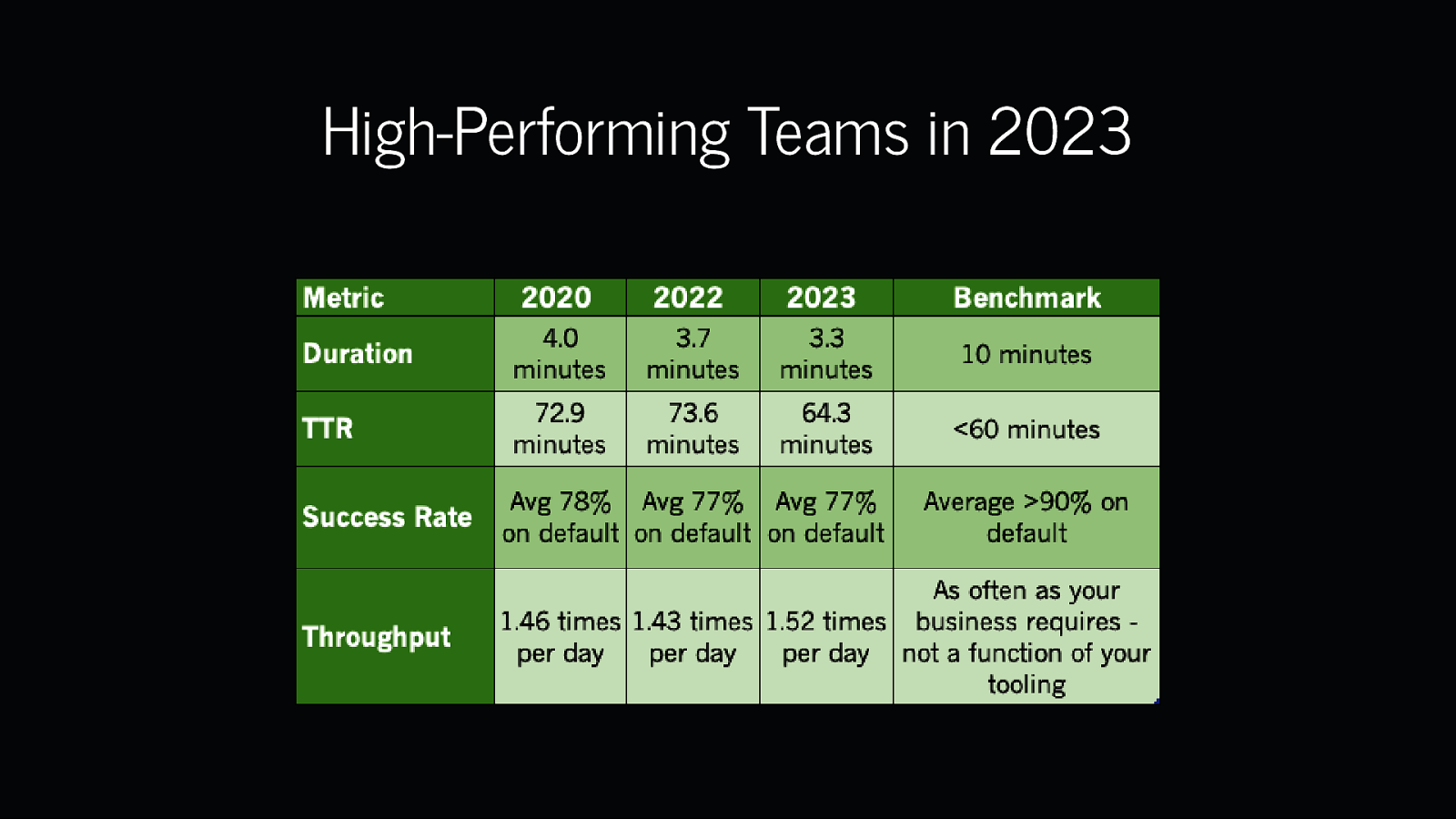
High-Performing Teams in 2023
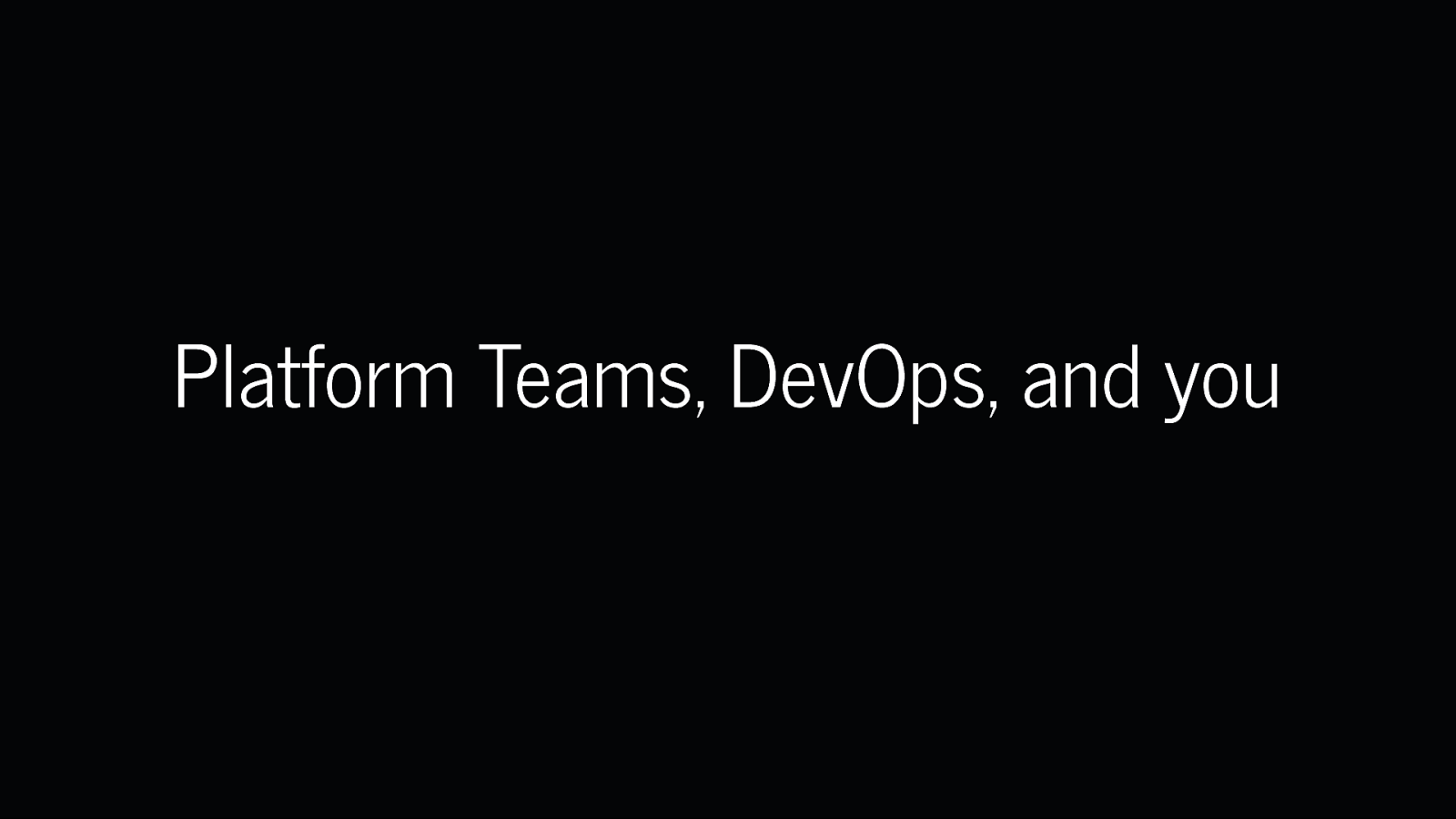
Platform Teams, DevOps, and you
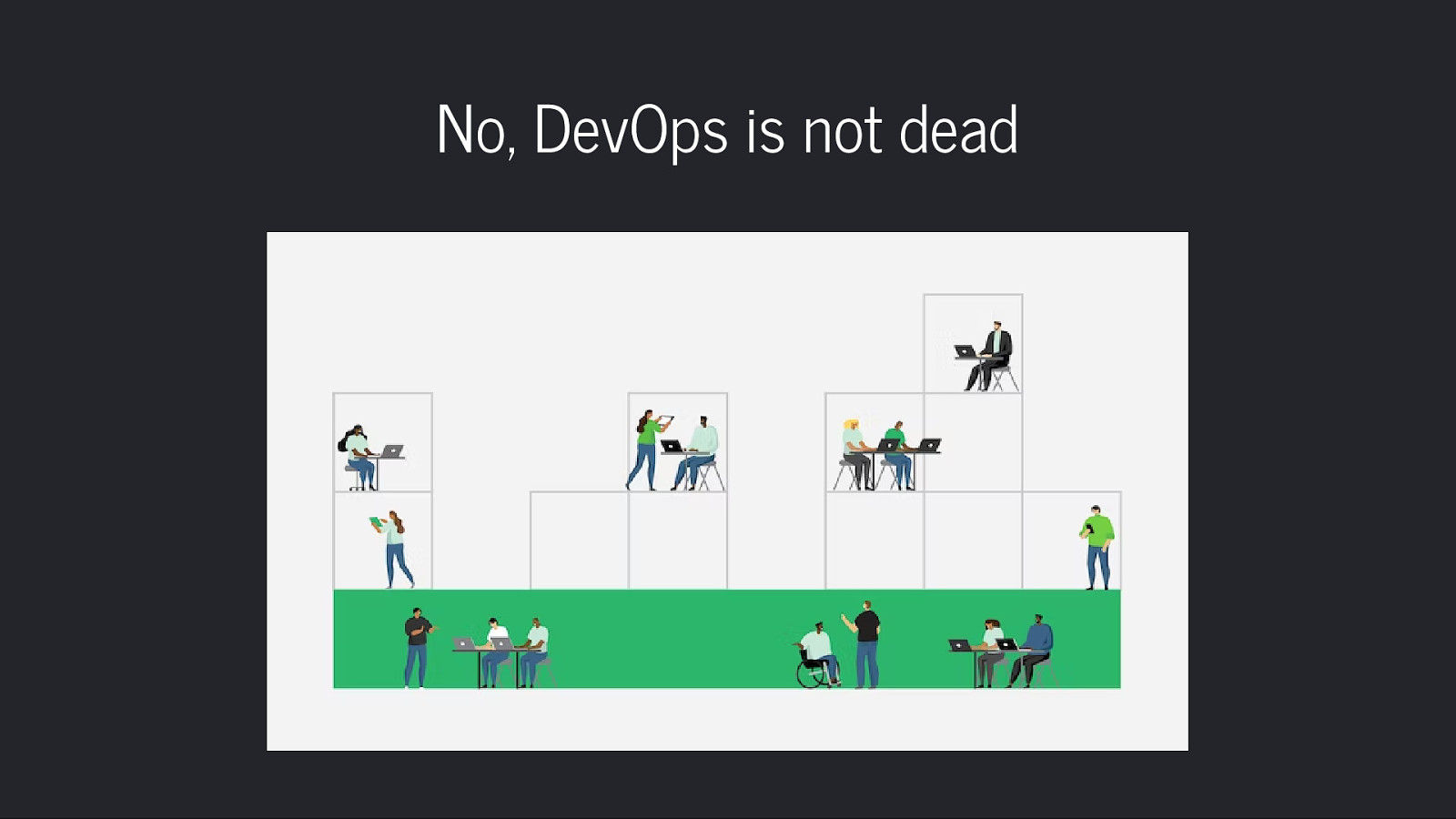
No, DevOps is not dead
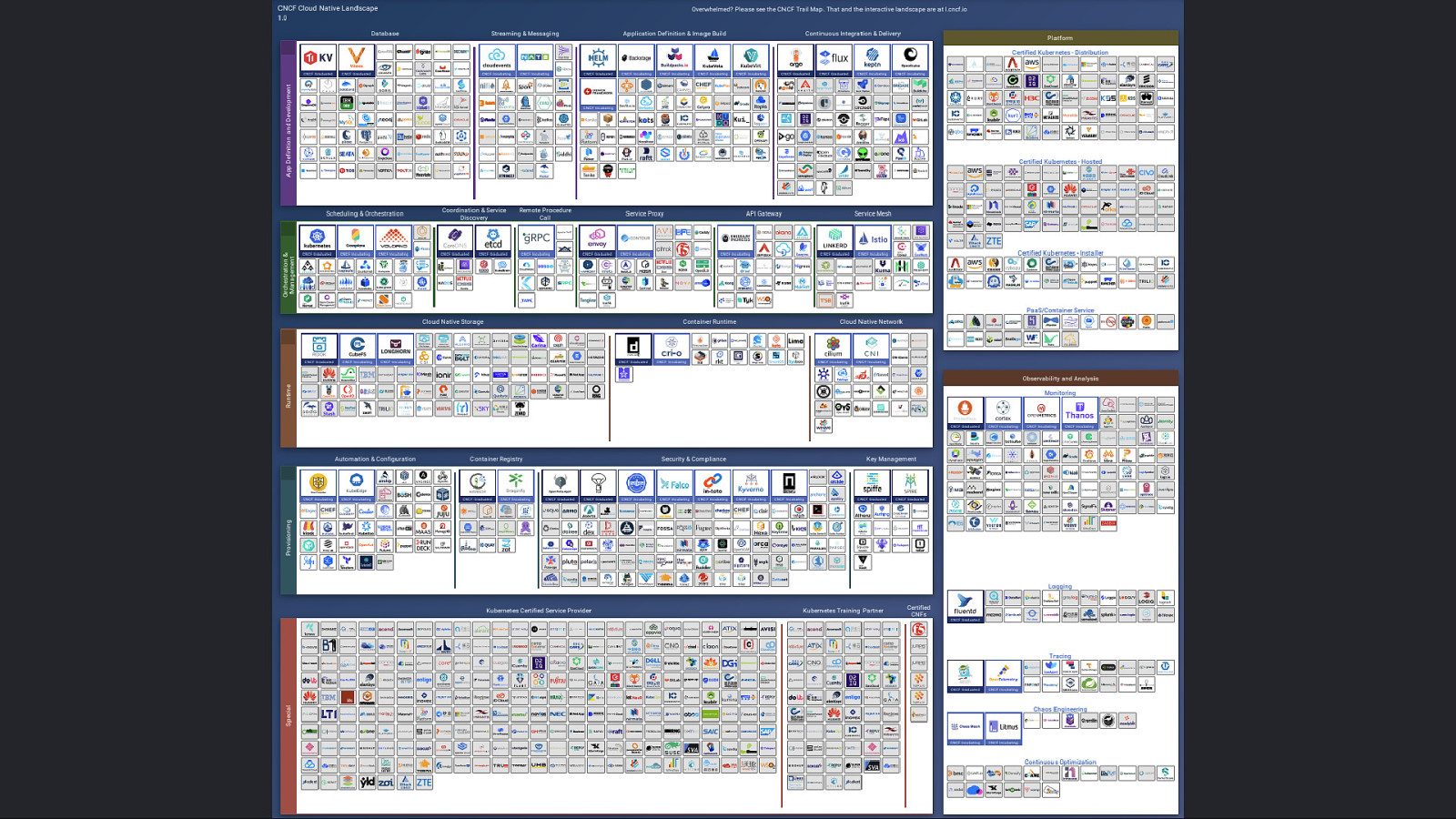
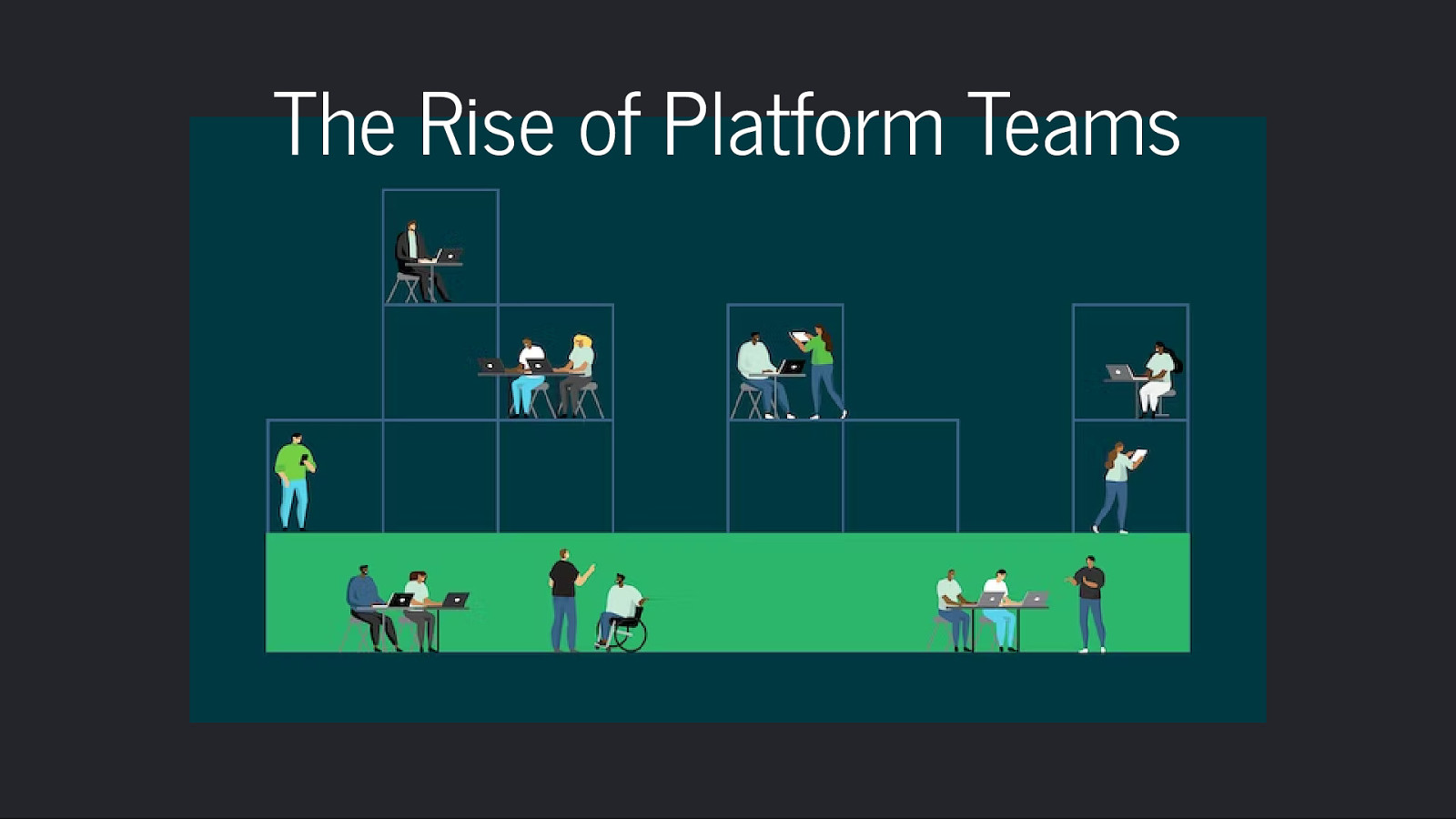
The Rise of Platform Teams

Image credit: tsh.io
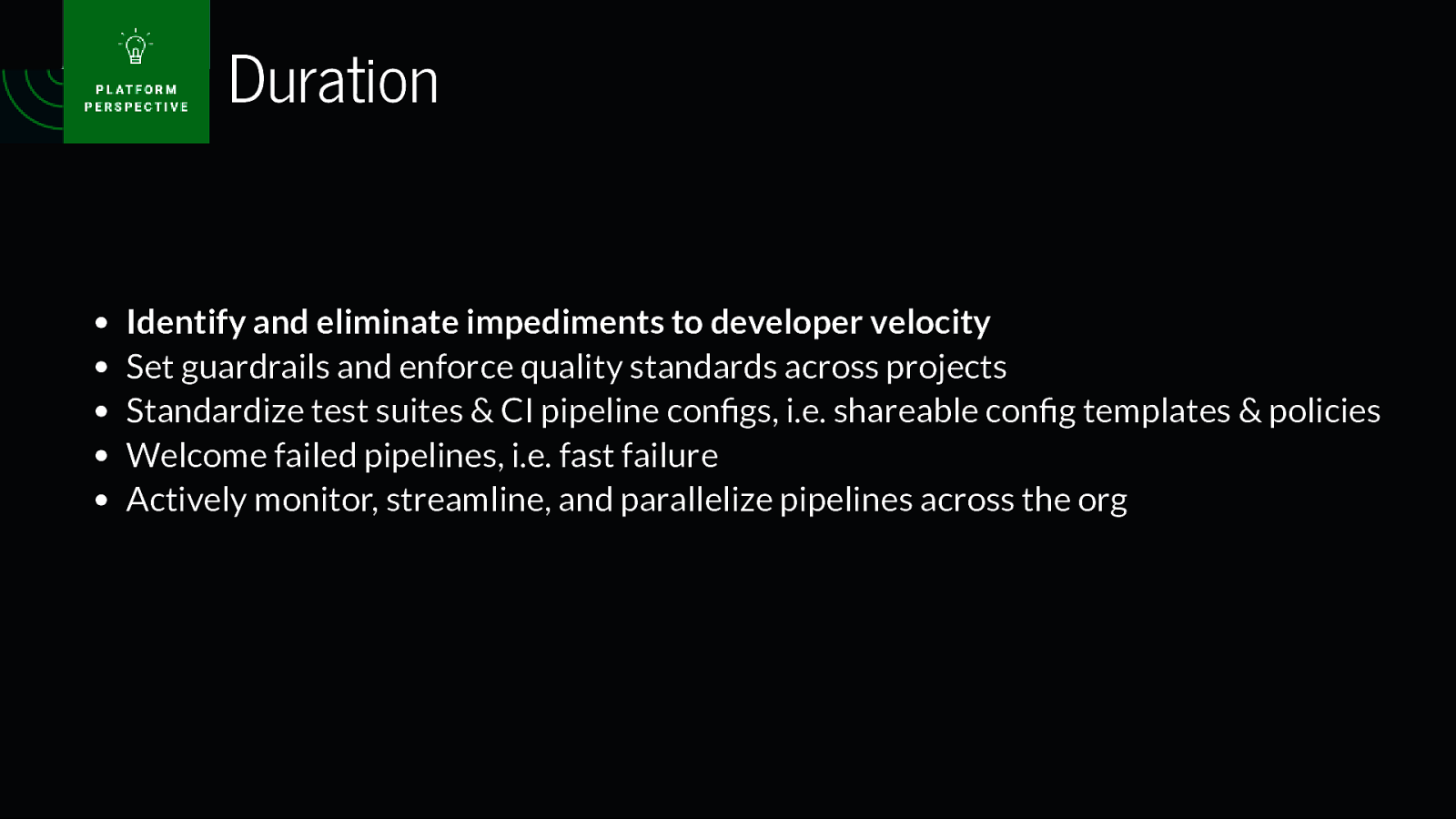
Duration Identify and eliminate impediments to developer velocity Set guardrails and enforce quality standards across projects Standardize test suites & CI pipeline configs, i.e. shareable config templates & policies Welcome failed pipelines, i.e. fast failure Actively monitor, streamline, and parallelize pipelines across the org
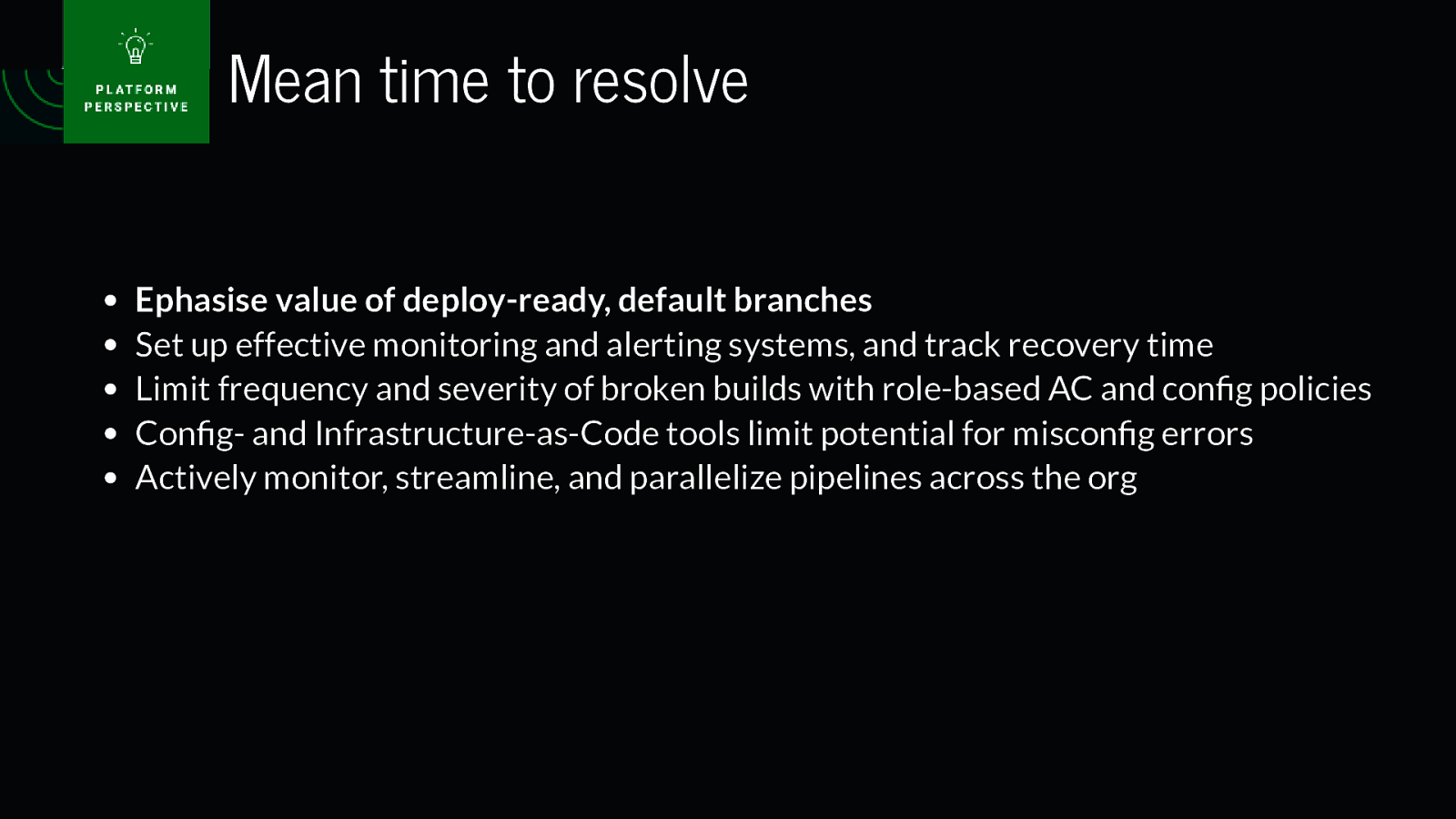
Mean time to resolve Ephasise value of deploy-ready, default branches Set up effective monitoring and alerting systems, and track recovery time Limit frequency and severity of broken builds with role-based AC and config policies Config- and Infrastructure-as-Code tools limit potential for misconfig errors Actively monitor, streamline, and parallelize pipelines across the org
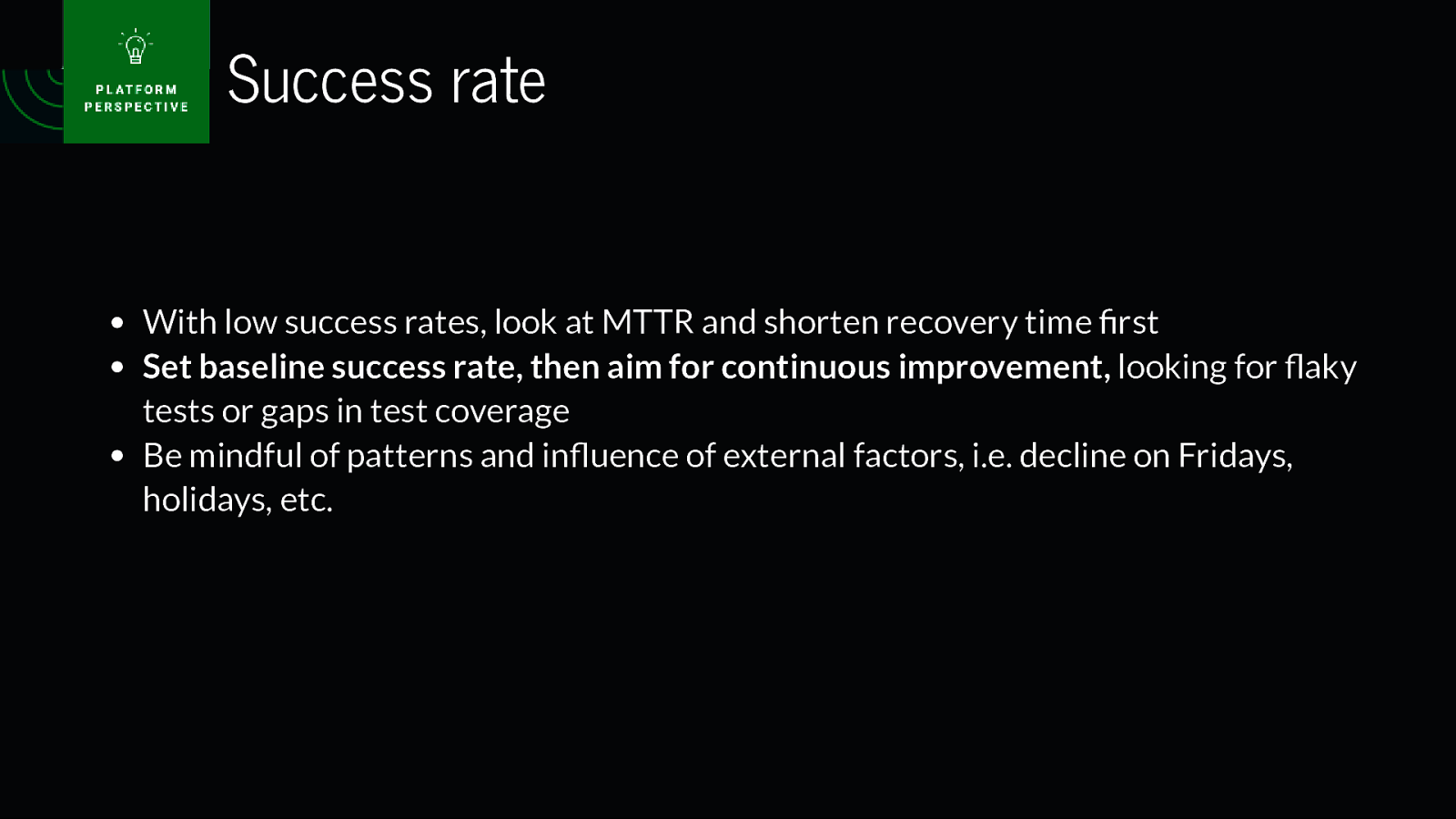
Success rate With low success rates, look at MTTR and shorten recovery time first Set baseline success rate, then aim for continuous improvement, looking for flaky tests or gaps in test coverage Be mindful of patterns and influence of external factors, i.e. decline on Fridays, holidays, etc.
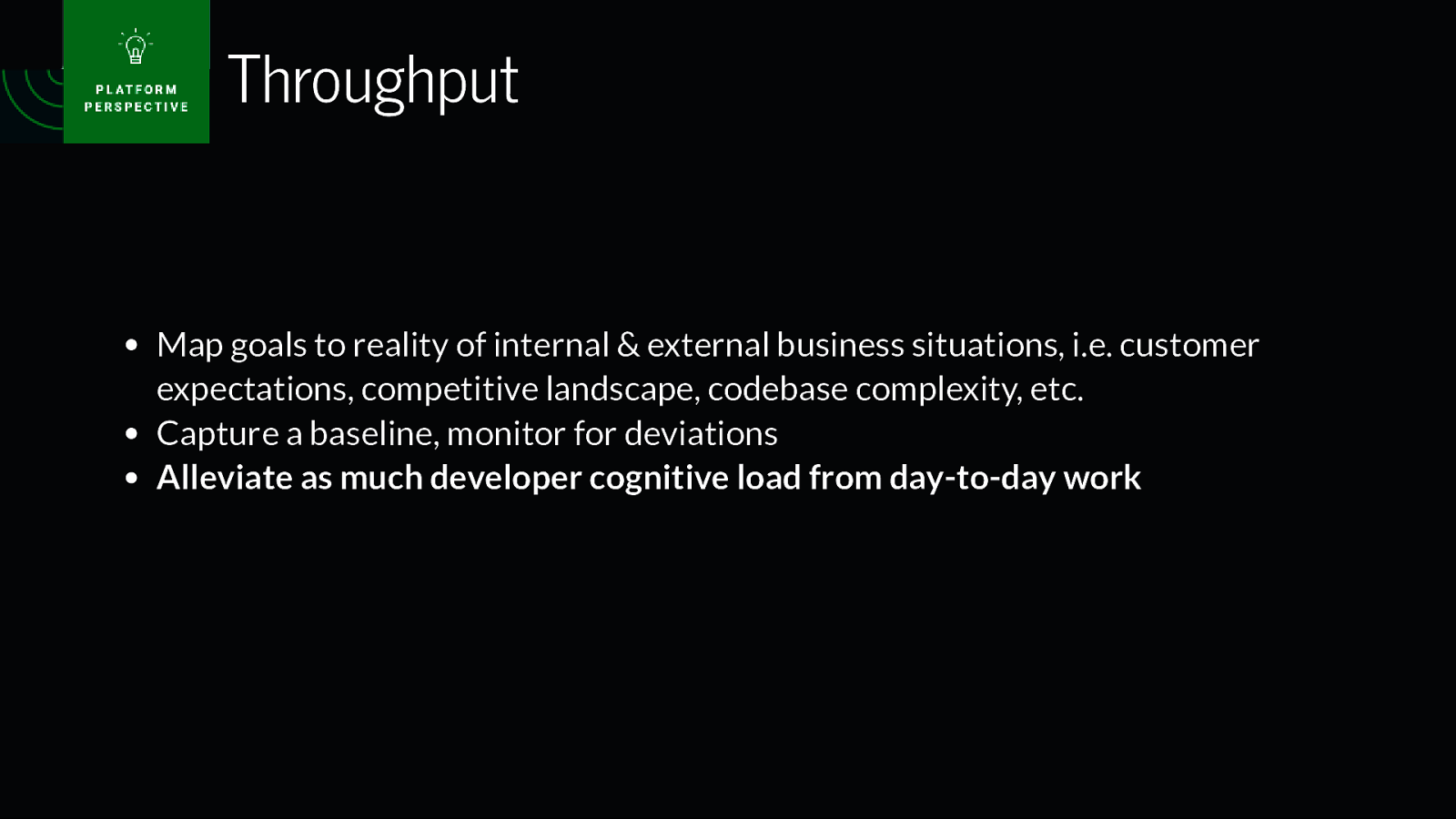
Throughput Map goals to reality of internal & external business situations, i.e. customer expectations, competitive landscape, codebase complexity, etc. Capture a baseline, monitor for deviations Alleviate as much developer cognitive load from day-to-day work
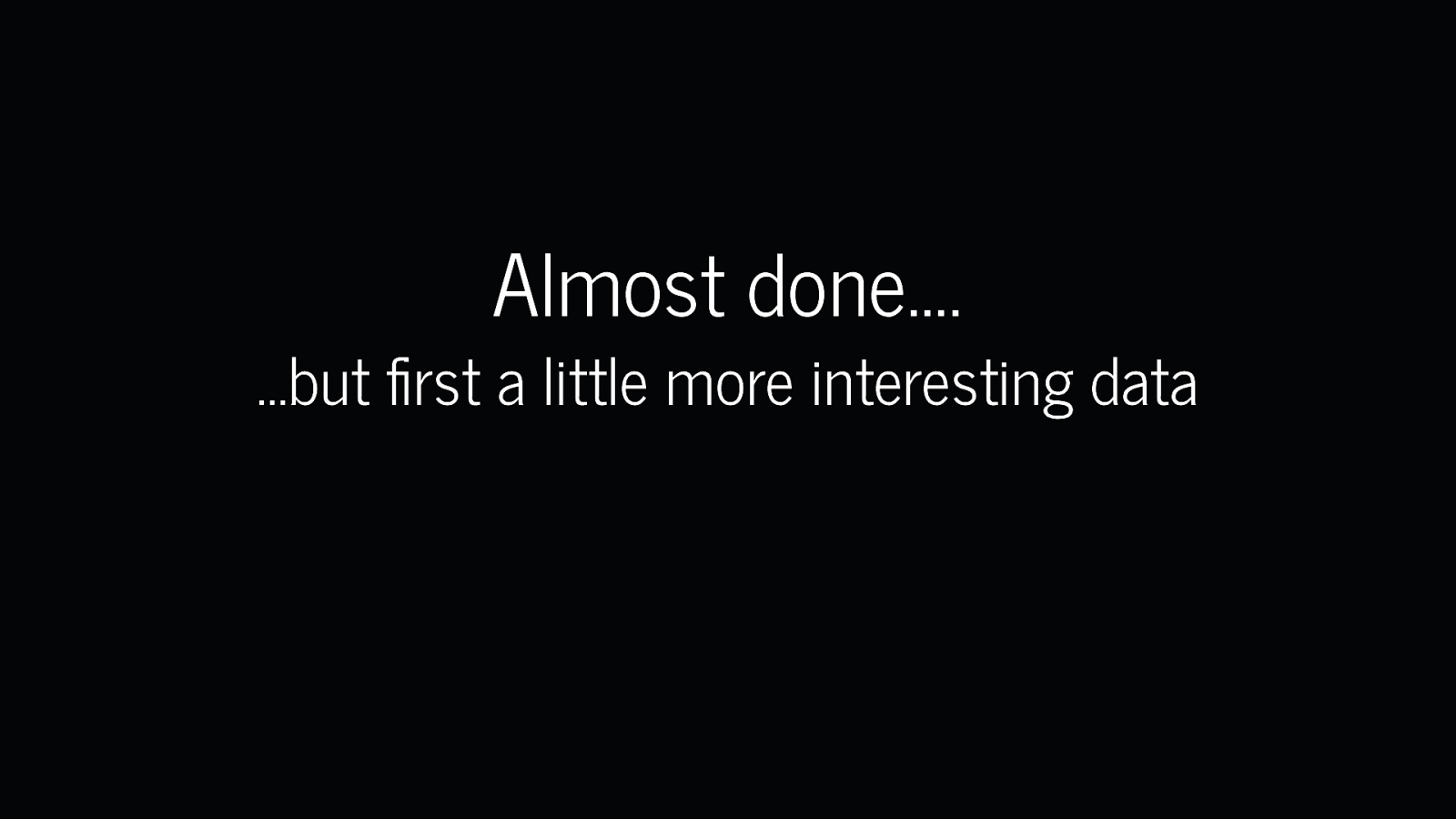
Almost done…. …but first a little more interesting data
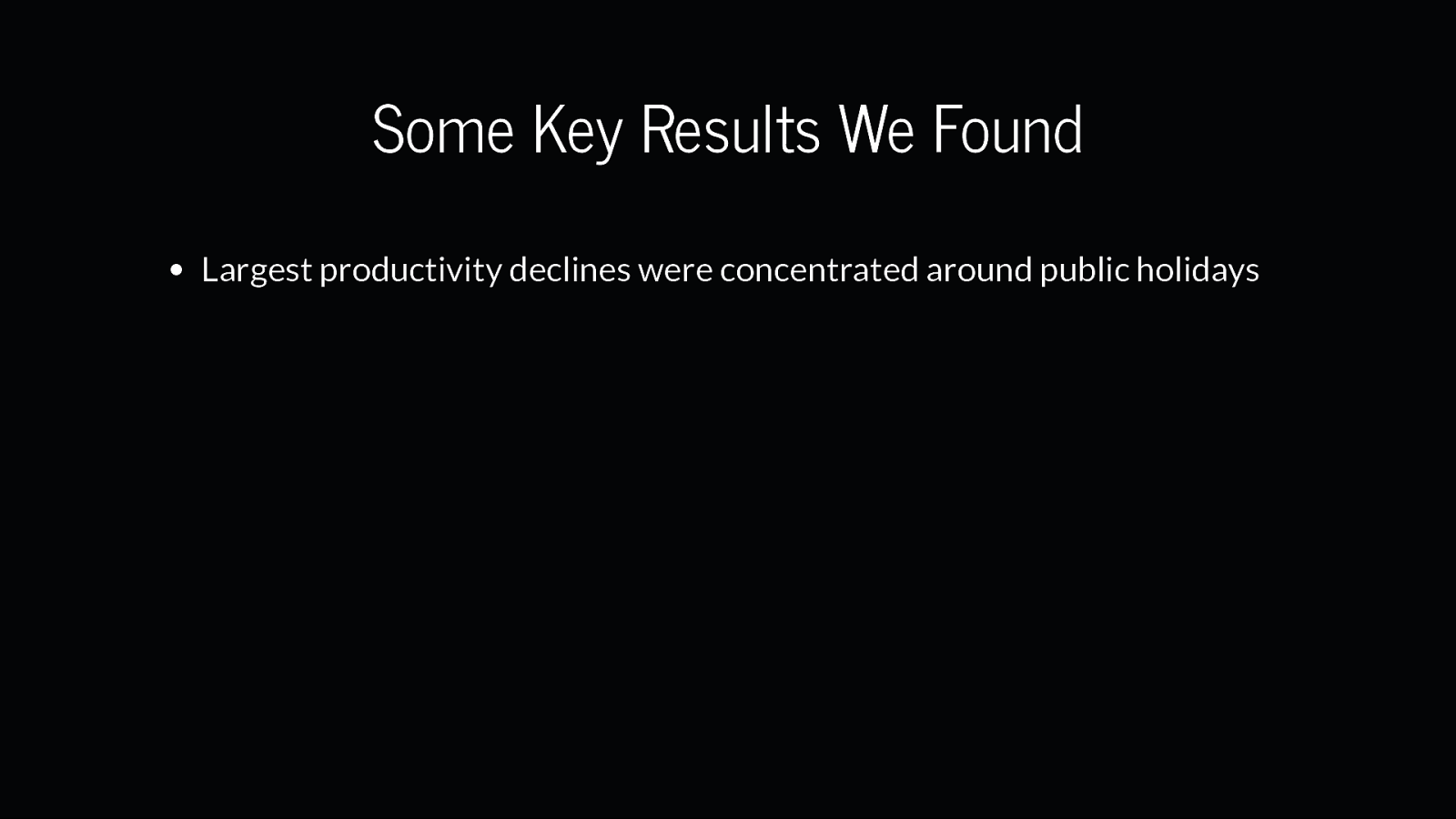
Some Key Results We Found Largest productivity declines were concentrated around public holidays
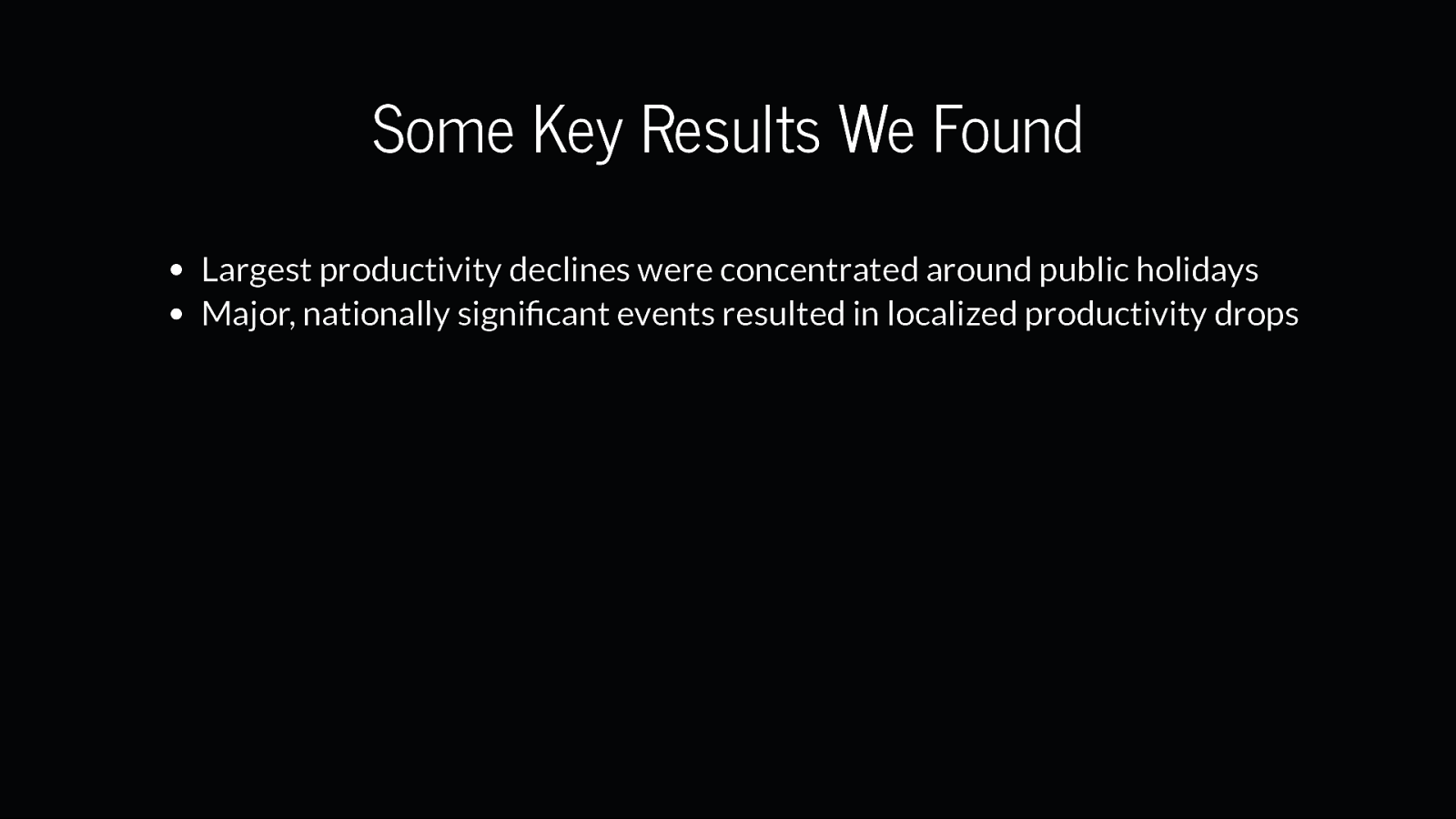
Some Key Results We Found Largest productivity declines were concentrated around public holidays Major, nationally significant events resulted in localized productivity drops
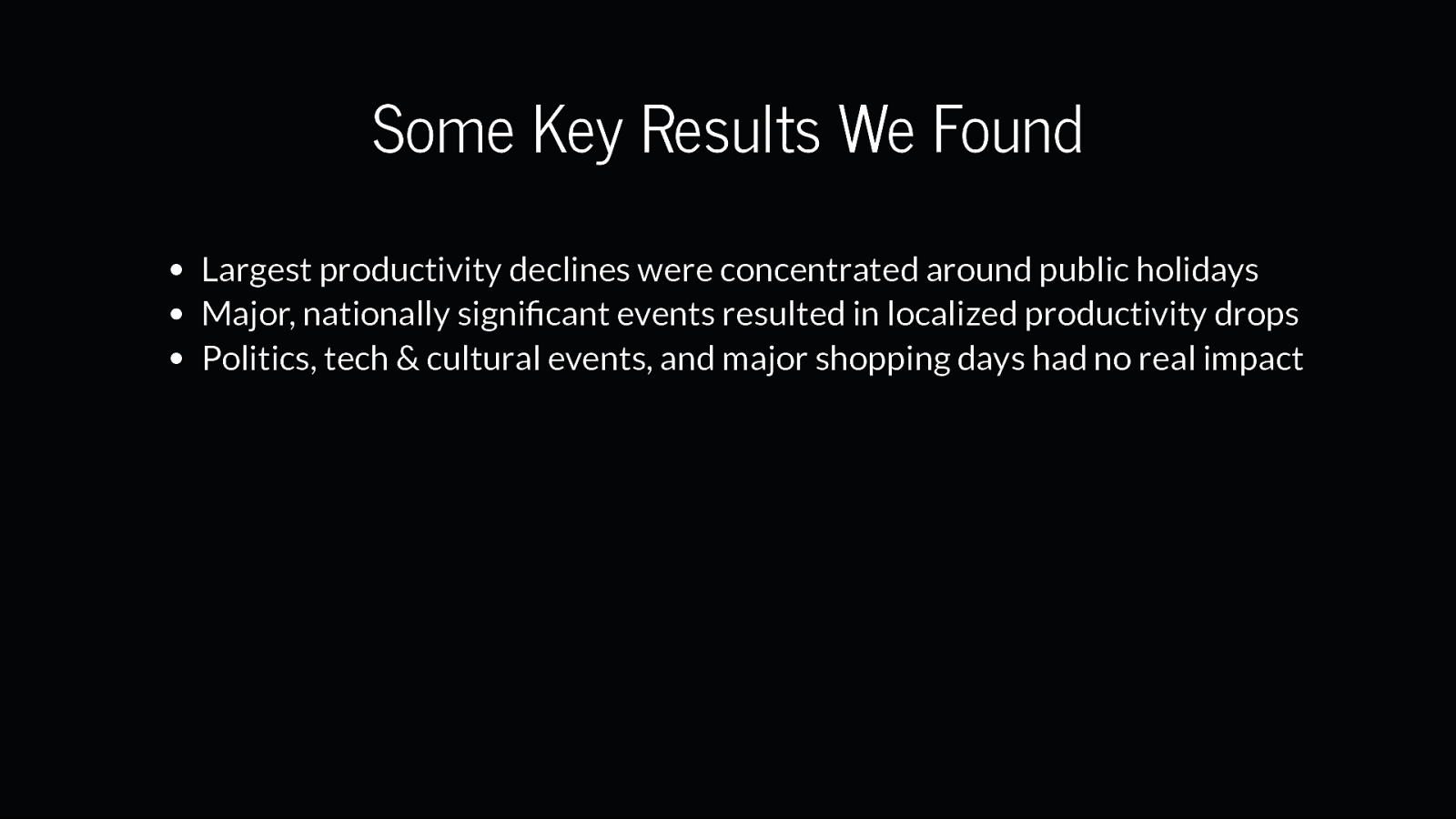
Some Key Results We Found Largest productivity declines were concentrated around public holidays Major, nationally significant events resulted in localized productivity drops Politics, tech & cultural events, and major shopping days had no real impact
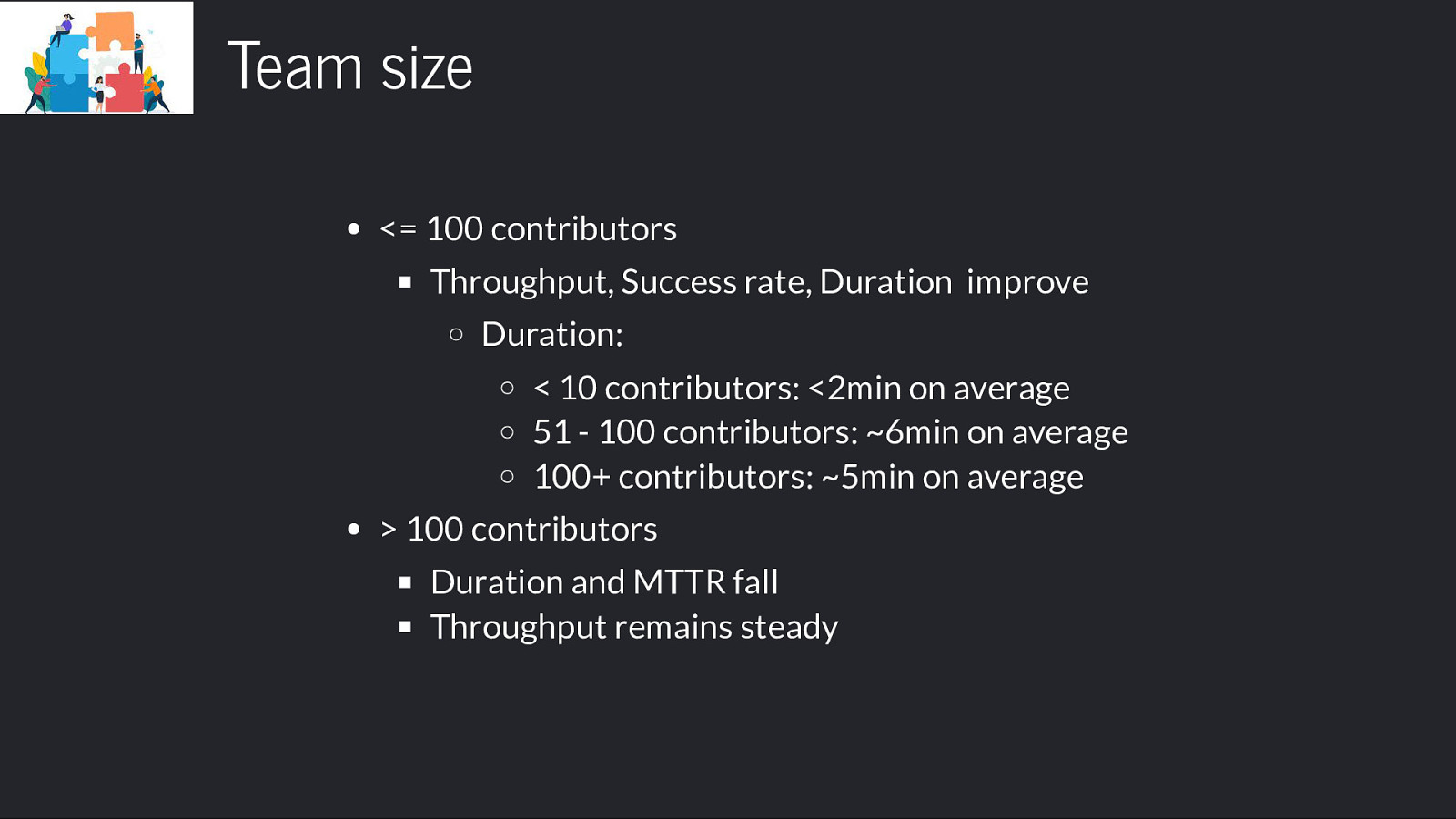
Team size <= 100 contributors Throughput, Success rate, Duration improve Duration: < 10 contributors: <2min on average 51 - 100 contributors: ~6min on average 100+ contributors: ~5min on average > 100 contributors Duration and MTTR fall Throughput remains steady
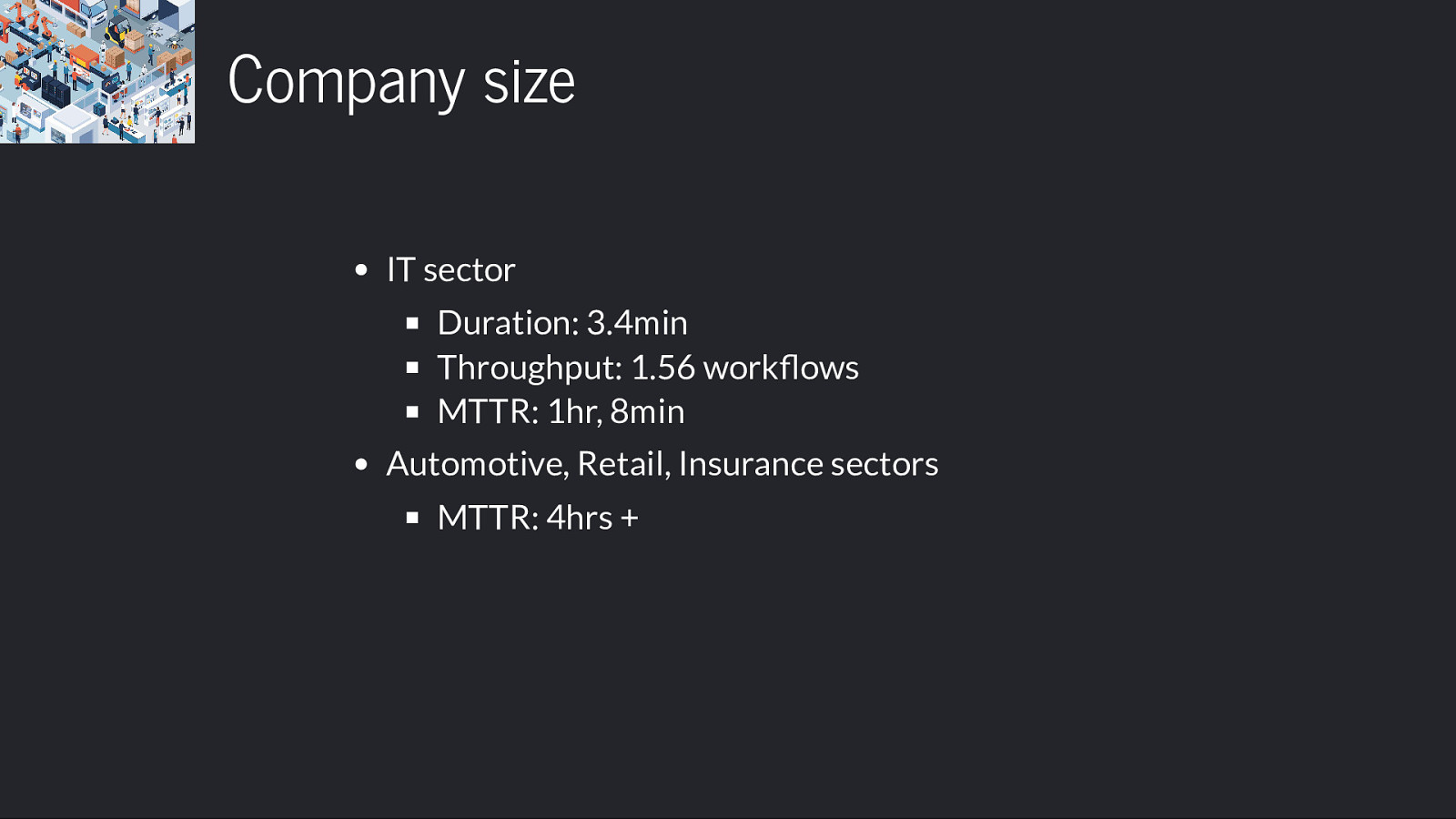
Company size IT sector Duration: 3.4min Throughput: 1.56 workflows MTTR: 1hr, 8min Automotive, Retail, Insurance sectors MTTR: 4hrs +
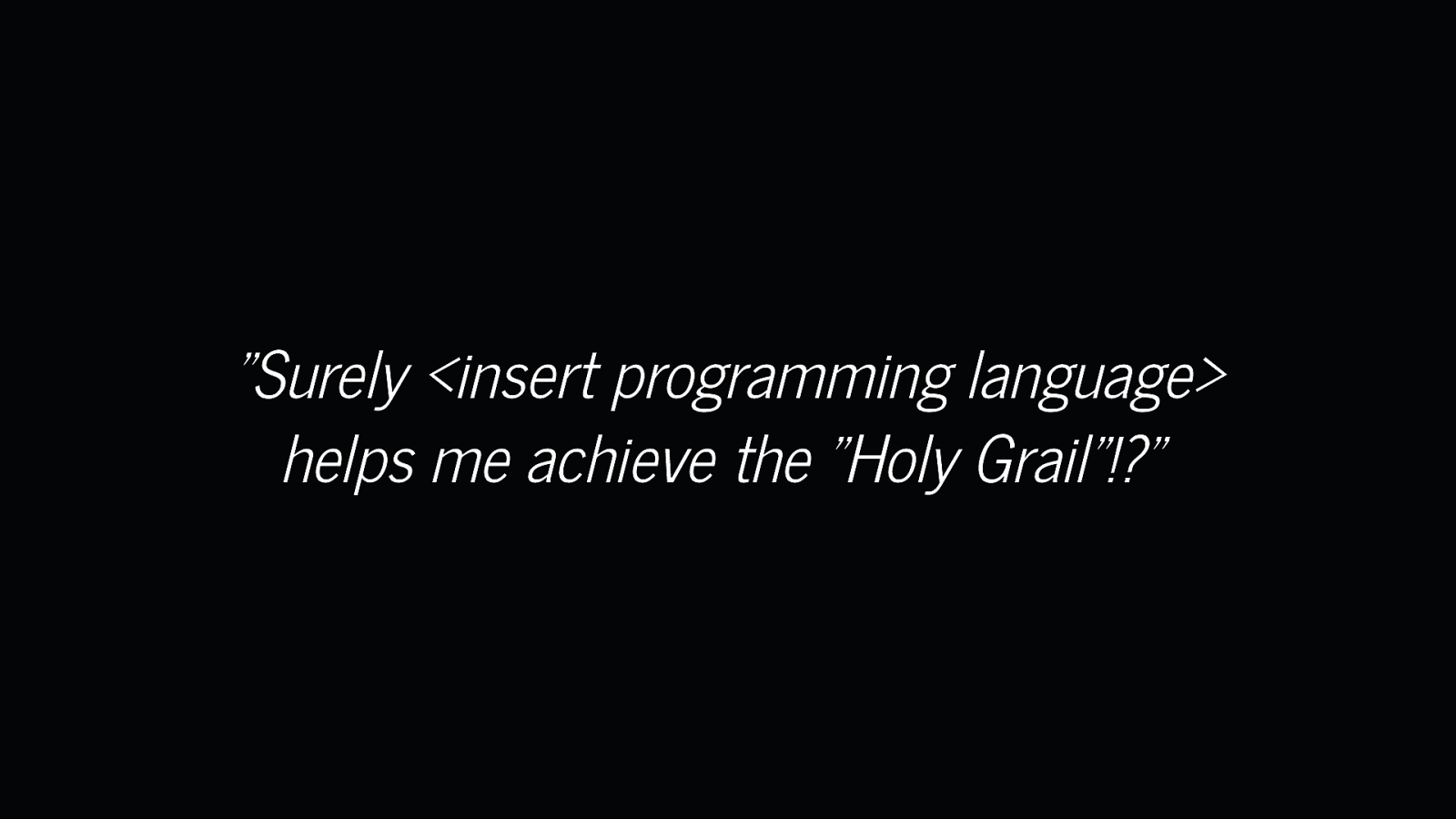
“Surely <insert programming language> helps me achieve the “Holy Grail”!?”
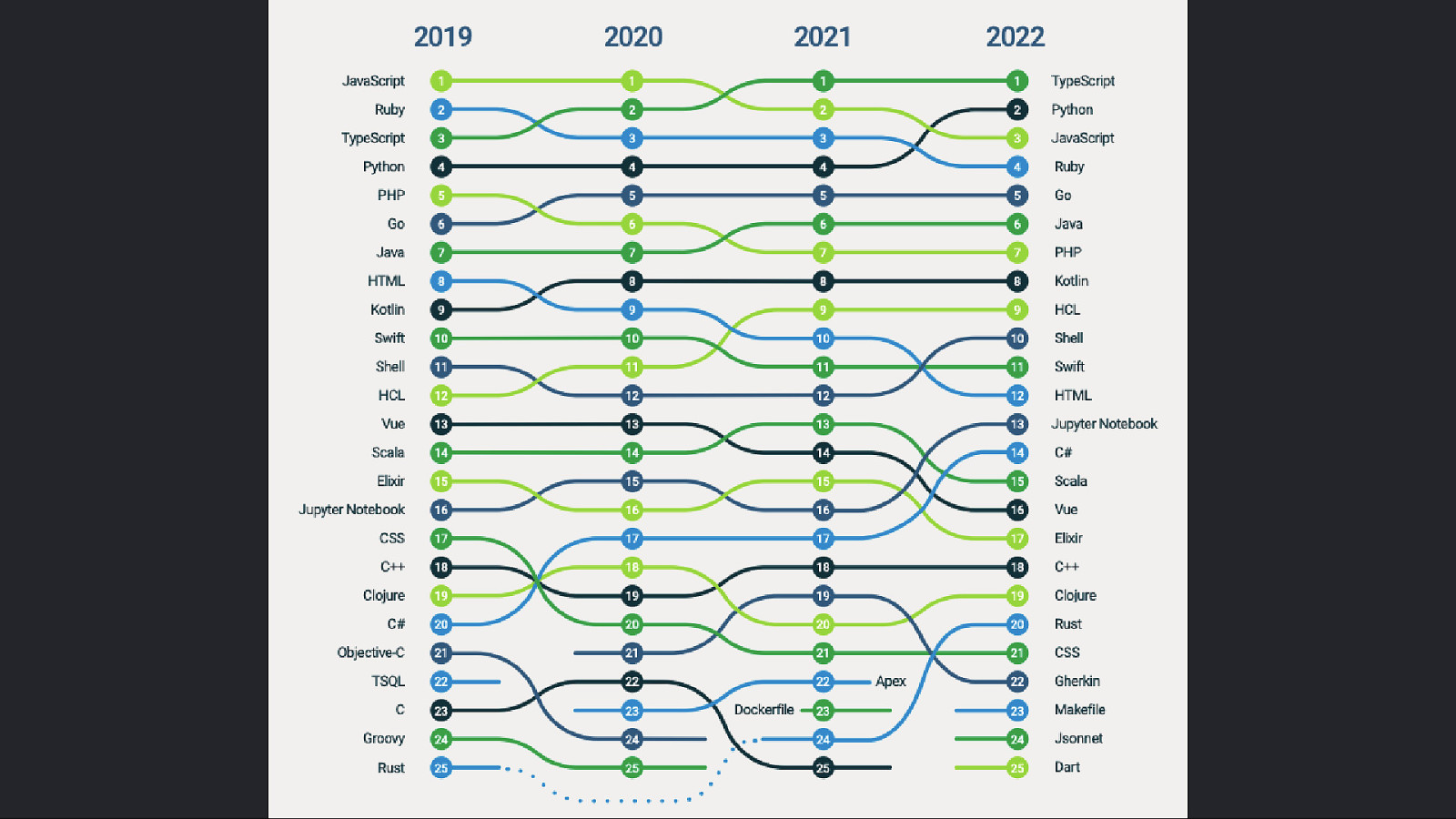

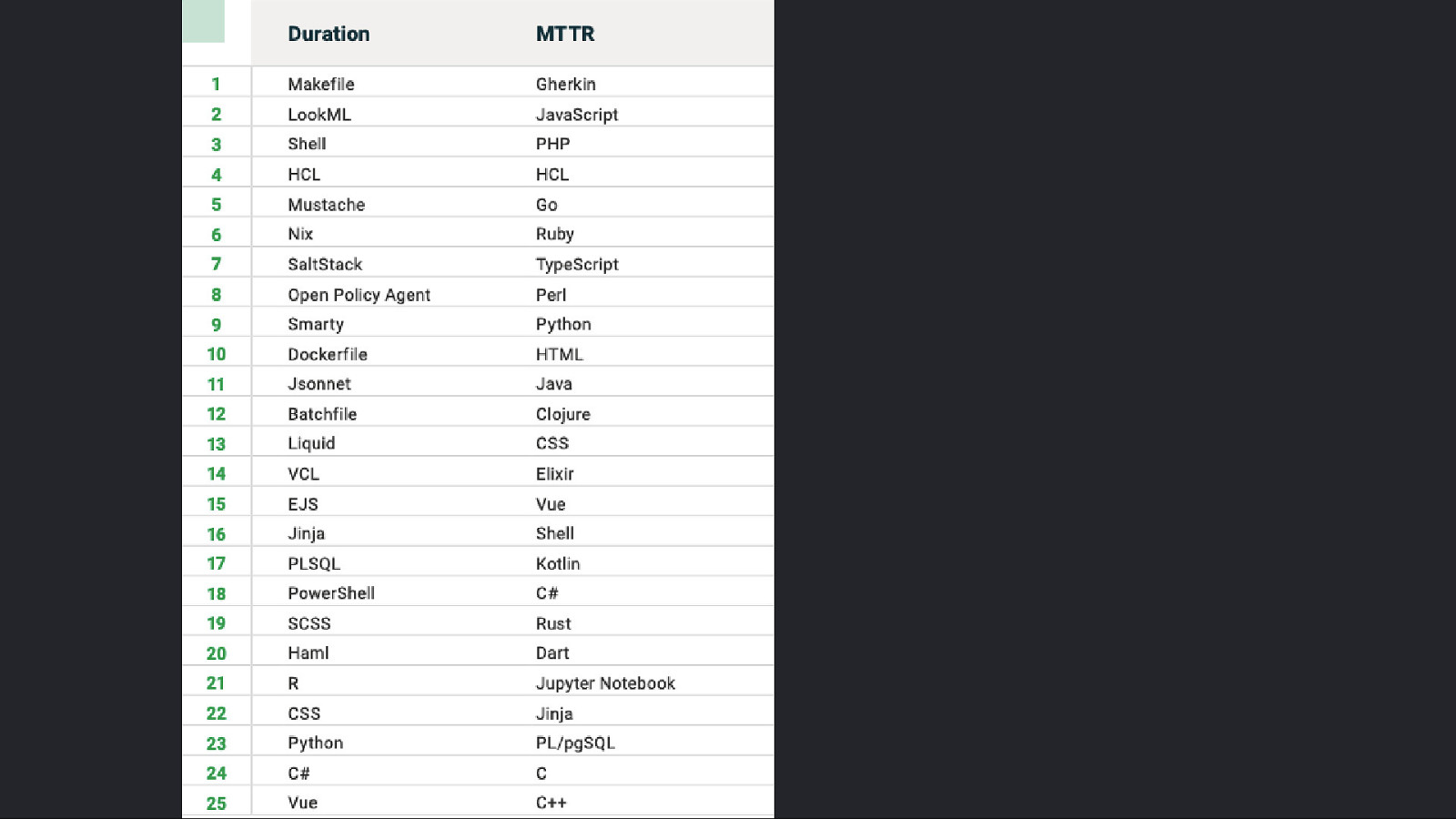
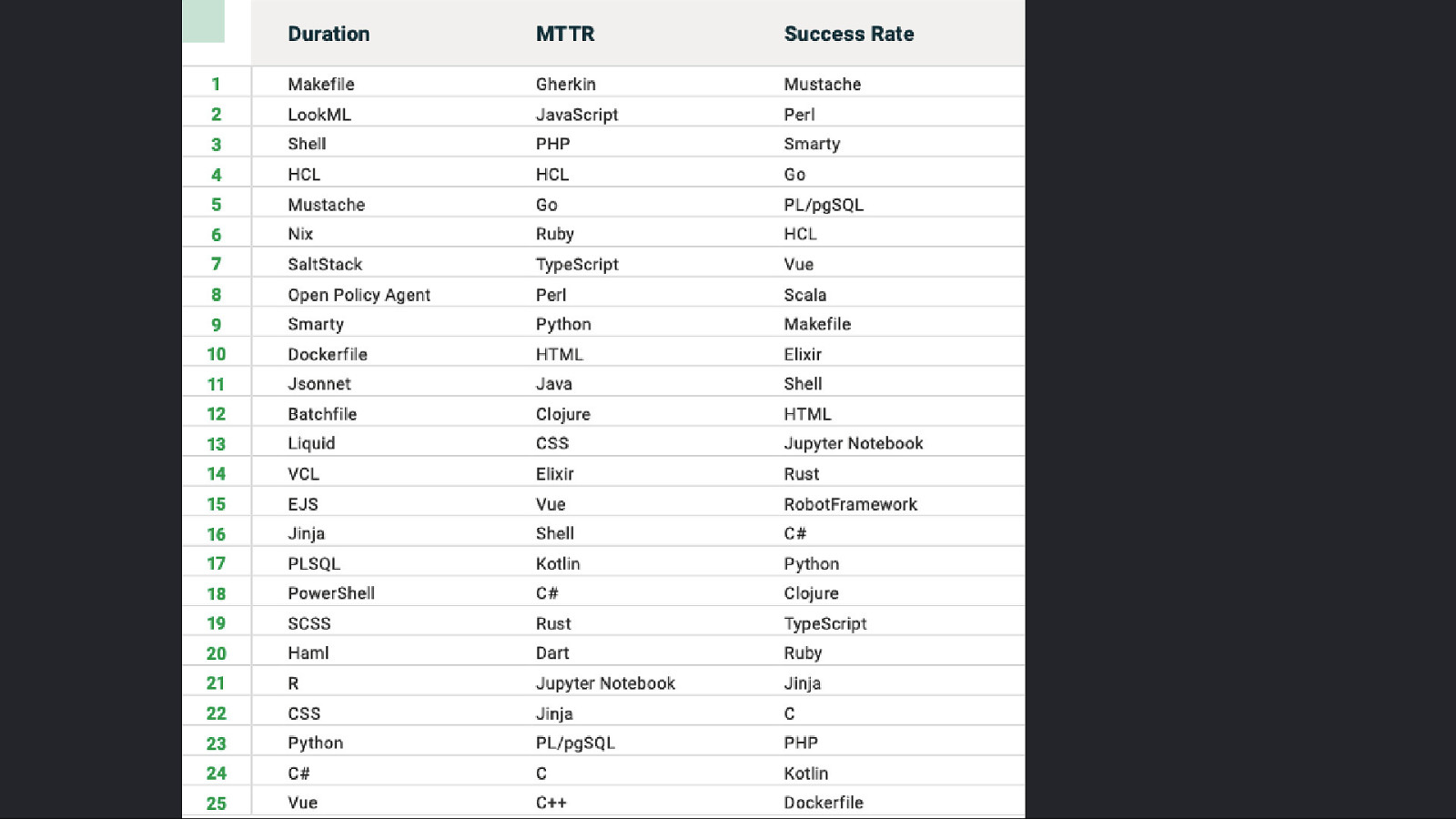
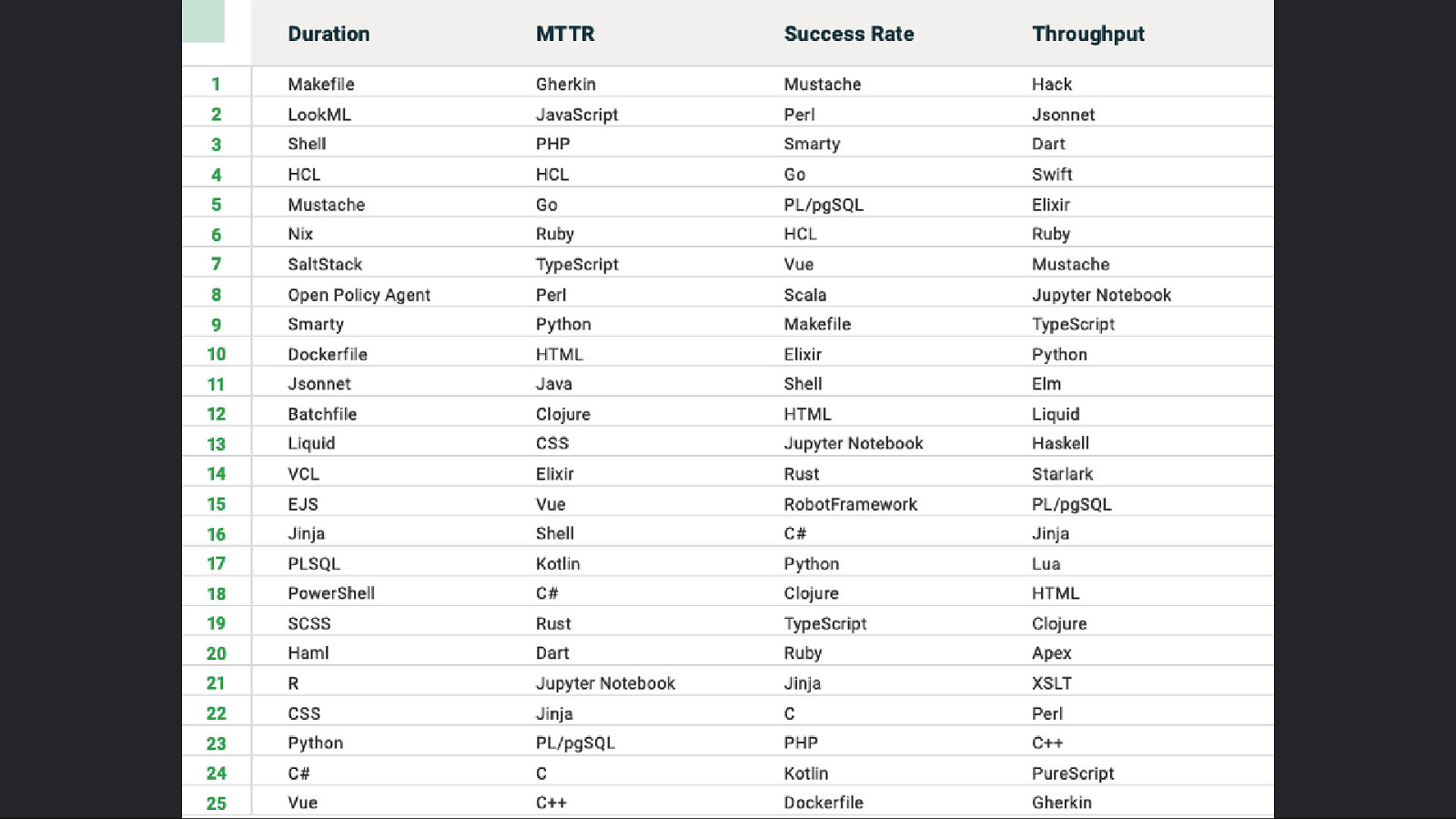

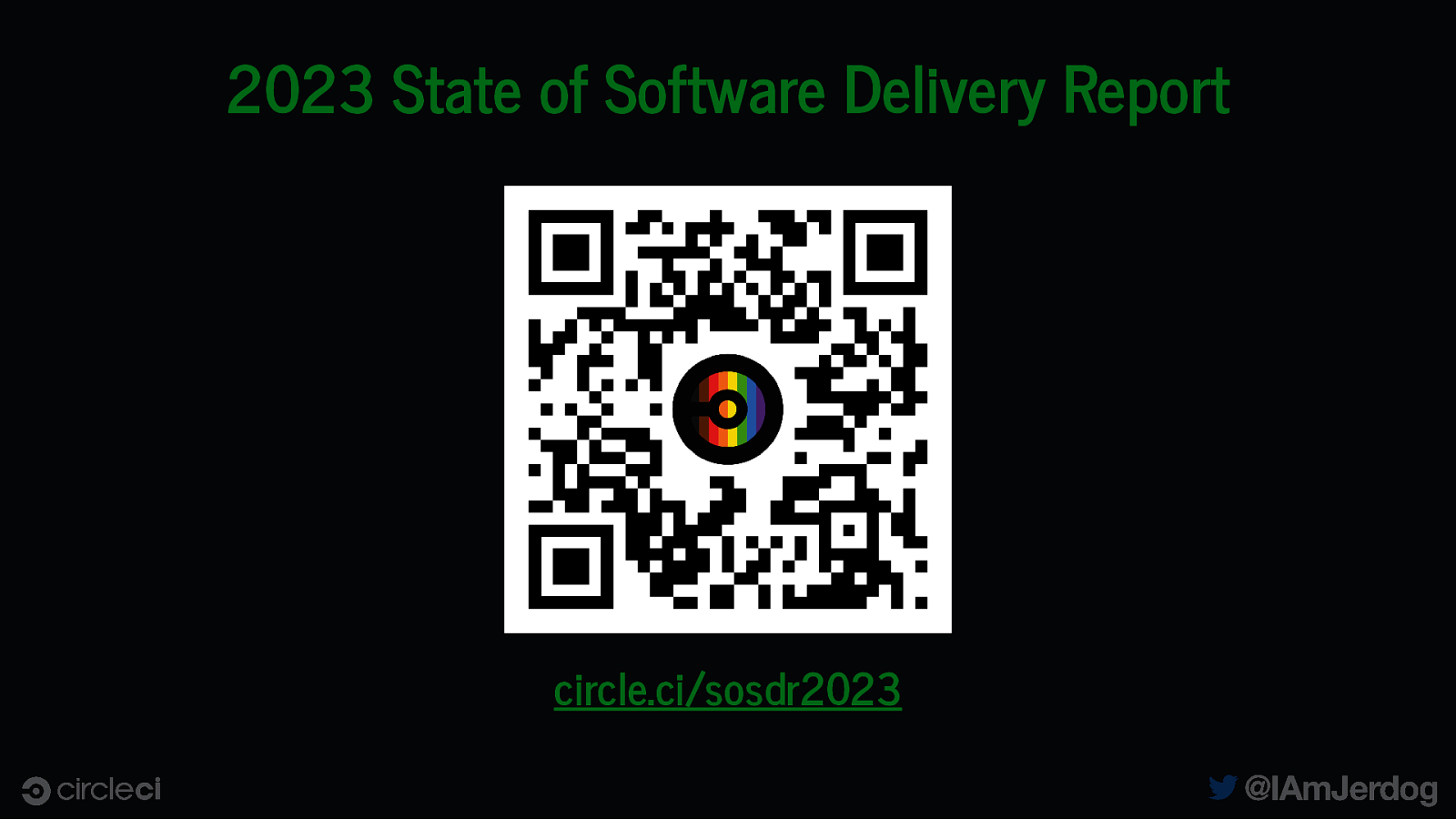
2023 State of Software Delivery Report circle.ci/sosdr2023
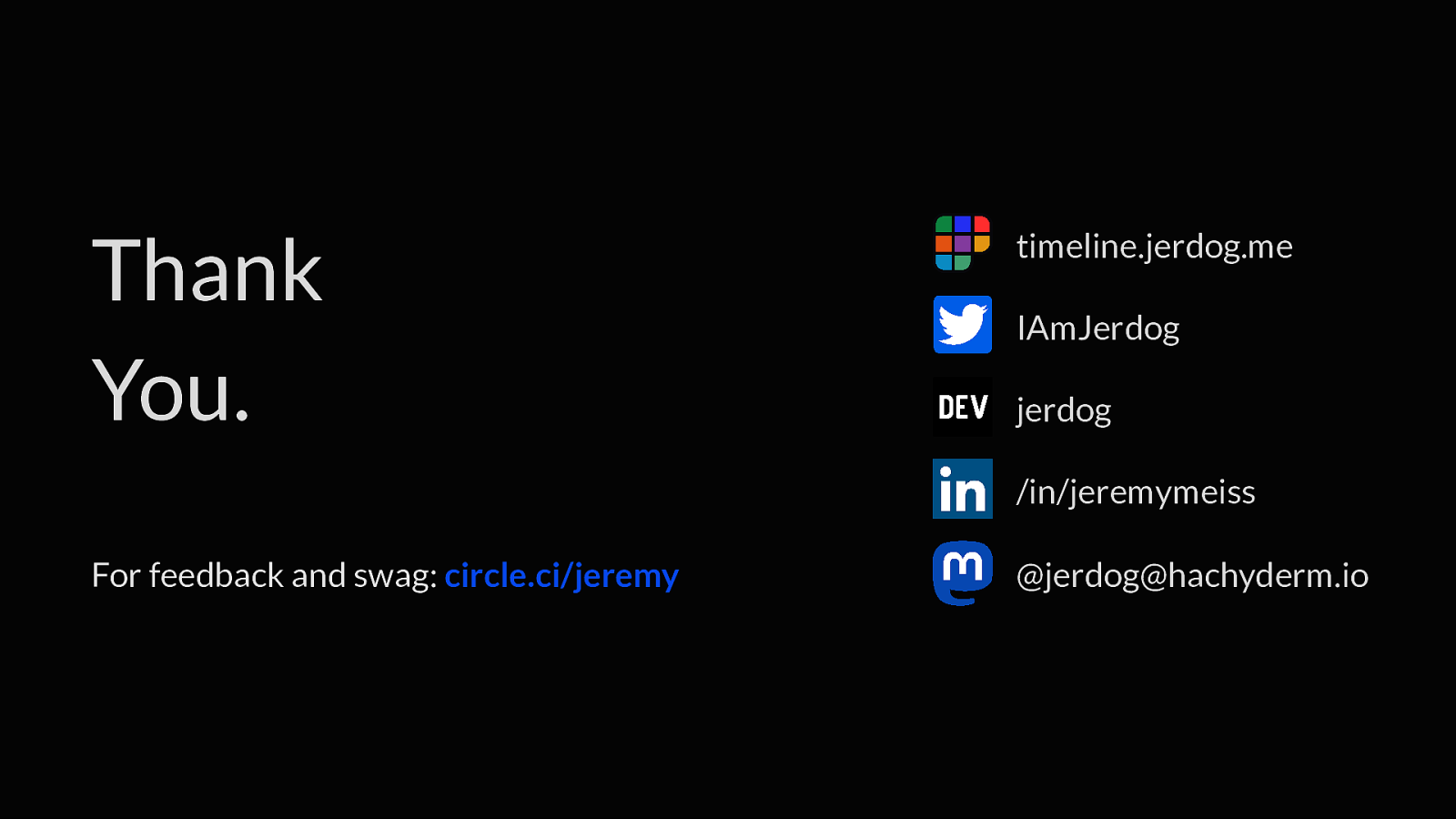
Thank You. timeline.jerdog.me IAmJerdog jerdog /in/jeremymeiss For feedback and swag: circle.ci/jeremy @jerdog@hachyderm.io
“High-performing engineering teams” are the Holy Grail for every CTO. But what are they, are they attainable, and if so, how? In this talk we’ll look at anonymous CI/CD data collected each year since 2019, and explore this rare specimen in its native habitat - right there in your organization, and how to activate them. We’ll also gain some interesting insights into better DevOps practices along the way, including the role of a Platform Team!
Buzz and feedback
Here’s what was said about this presentation on social media.
-
🚀 Change is coming to the technology industry, and our 2023 SOSDR is here to reveal how your #DevOps teams can deliver high-impact results for engineering productivity based on our analysis of nearly 15 million CircleCI workflows.
— CircleCI (@CircleCI) April 6, 2023
Read the report: https://t.co/lDXxc9ml7k pic.twitter.com/lX5PmEg52f
